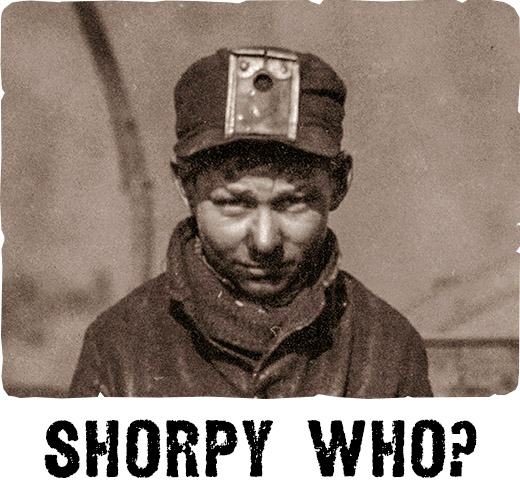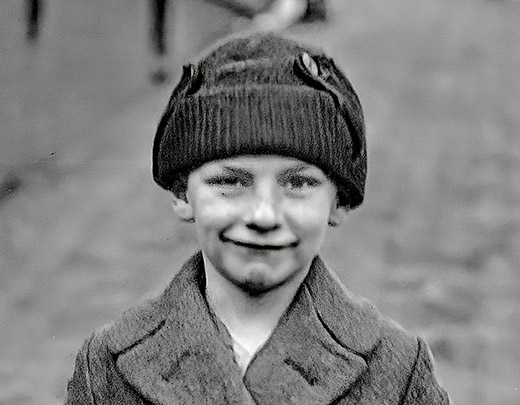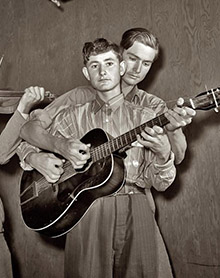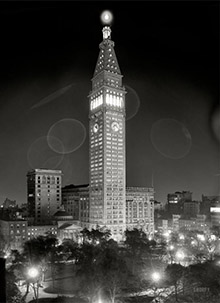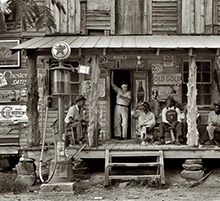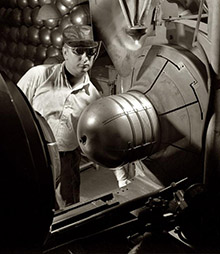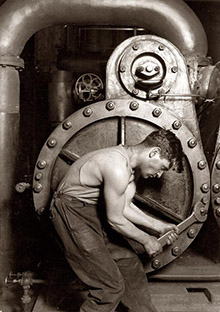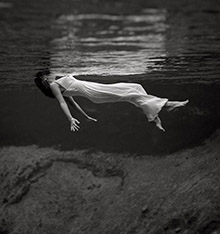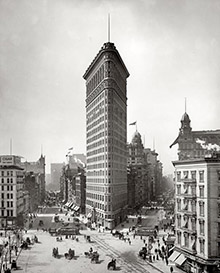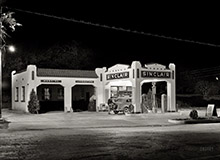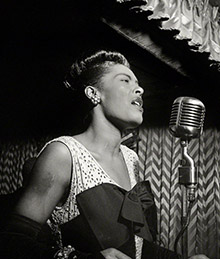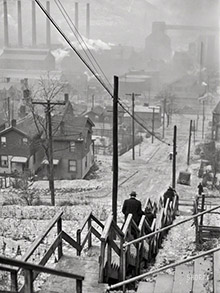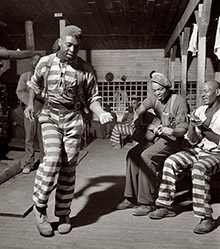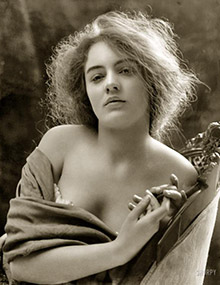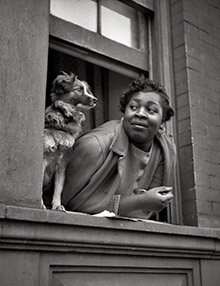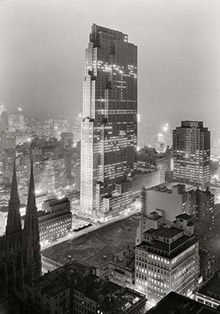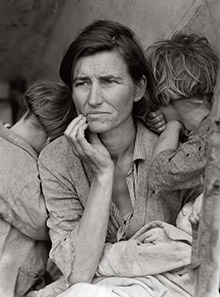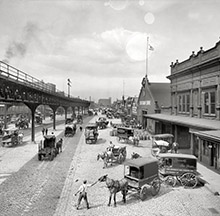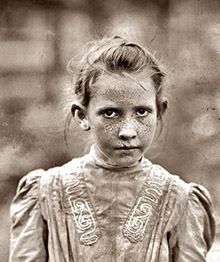
MAY CONTAIN NUTS

Search Shorpy
SHORPY ART
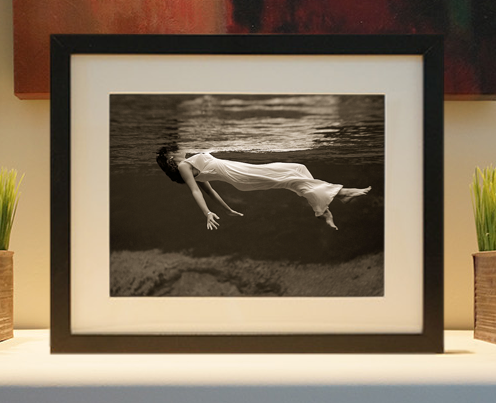
Framed or unframed, desk size to sofa size, printed by us in Arizona and Alabama since 2007. Explore now.
Join and Share
Ad-Free Shorpy
Shorpy is funded by you. Patreon contributors get an ad-free experience.
Learn more.

Recent comments
- Lofty addition
- In 1912
- Keenan Building
- Six years old
- Taken from the P.J. McArdle Roadway?
- It stood only 47 years
- Three track mind
- Incline to the right
- Reach for the sky, 1912 style
- No clean sweep
- Same Job Title, Same Face
- Sadly Lost
- Beautiful ...
- Where you get your kicks
- Aim High
- Pueblo Revival sisters
- Pueblo Neoclassicism
- Milk Man
- Regional dialect.
- Spielberg's inspiration
- Great Photo
- Loaf Story
- Do you still have the Rakes category?
- Could almost be a scene from the 1957 movie 'Hell Drivers'
- The Wages of Fear.
- Conspicuous by their absence
- Got Milk?
- All that aluminum
- No lefties
- Smoke 'em if you've got 'em
Member Photos
The Shorpy
Print Emporium
Print Emporium
Search Shorpy
Search results -- 30 results per page
- Oregon Pair: 1898
- Circa 1898. "U.S.S. Oregon , gangway on superstructure deck." 8x10 inch dry plate glass negative ... link Thanks for posting this wonderful view of USS Oregon. My grandfather served aboard her in 1917 when she was used as a US Navy ... when they fire.
Man down! On the lower left.
Oregon pair translates to five souls in the photo.
Nominated for a ... Posted by Dave - 08/02/2012 - 7:42pm -

- Dad at Uncanny Canyon in Oregon: 1954
- This is my dad, at Uncanny Canyon in Southern Oregon. I assume that the picture was taken by my mother, the year was 1954. Uncanny Canyon was located in Oregon on the Crater Lake Highway about halfway between Gold Hill and Crater ... Posted by Nilea - 05/20/2010 - 5:41pm -
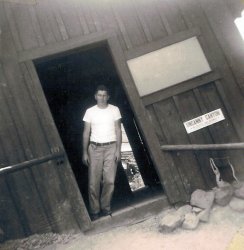
- The Oregon: 1898
- September 1898. "U.S.S. Oregon in dry dock, Brooklyn Navy Yard." 8x10 inch dry plate glass negative, ... (which reinforced calls to build the Panama Canal.)
"Oregon" helped finish off Admiral Cervera's fleet off Cuba in July, 1898, and ... of Magellan, to join Dewey's fleet in the Philippines. "Oregon" was decommissioned in 1919.
Once we're done, Admiral, ... Posted by Dave - 08/02/2012 - 4:16pm -
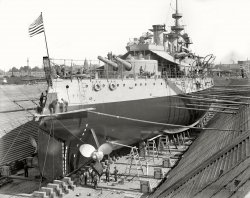
- 535-07-5248 and Wife
- Oregon, August 1939. "Unemployed lumber worker goes with his wife to the bean ... the system.
[The dates and place of death (Portland, Oregon) are the only information given. - Dave]
Hey- Even grandpas were ...
last residence: Portland, Multnomah, OR
535-07-5248
Oregon Death Index
Name: Thomas Urs Cave
Spouse: Annie
Birth: 1912 ... Posted by Dave - 08/01/2020 - 3:52pm -
![535-07-5248 and Wife Oregon, August 1939. "Unemployed lumber worker goes with his wife to the bean harvest. Note Social Security number tattooed on his arm." (And now a bit of Shorpy scholarship / detective work. A public records search shows that 535-07-5248 belonged to one Thomas Cave, born July 1912, died in 1980 in Portland. Which would make him 27 years old when this picture was taken.) Medium format safety negative by Dorothea Lange. View full size.
Wow, and is she hot.Wow. She's kind of hot too. Well, I am not showing proper respect for history either.
Wow. He's kind of hot.Wow. He's kind of hot. I am really not showing the proper respect for history.
She'sno slouch either as long as you're on the subject. I'm loving this series of Dust Bowl era pics. I have known a few people who back then had their number on their arm upside down so they could read it.
Relative?He's my brother's namesake, which makes me wonder if we're related. Can you get more information from Social Security numbers, other than name and d.o.b./d.o.d.? I'm Australian, so I don't know anything about the system.
[The dates and place of death (Portland, Oregon) are the only information given. - Dave]
Hey- Even grandpas were sexyHey- Even grandpas were sexy in their day!
SSDIYou can search the Social Security Death Index (available at Ancestry.com, among other places) and it will tell you dob/dod plus last residence. You can also generate the form to send to the Social Security office to request (purchase) a copy of the original application which will give a little more information.
I'm impressed with how well groomed they both are. Sure he's got stains on his trousers, but his hair is combed and (except for the mustache) he is clean-shaven. In the background, his wife is wearing what looks like a fairly stylish dress and her pose looks like it could have come out of a fashion magazine. They certainly do not look like the tired and downtrodden people we've seen in other pictures. Makes me wonder what he did before and how long they've been following the harvest.
[He was, as the caption says, a lumber worker. - Dave]
Pierce Brosnan?He bears an uncanny resemblance to Pierce Brosnan when he as in The Matador. Or, I guess I should say, Pierce Brosnan bears an uncanny resemblance to him.
See for yourself:
http://tinyurl.com/2gga3j
They managedThey managed to keep clean and she looked pretty good
They're both veryThey're both very attractive! The Depression was tough, even for the good-lookin'..
:)
Hubba!What a babe! :)
There are just so manyThere are just so many awesome things about this photo. The elegant beauty of the woman. The handsome man with pipe. The tattoo on the arm with his Social Security number of all things. Then to be able to search them out by using his social and modern technology. It's just a treat!
Thomas CaveTHOMAS CAVE
born: 02 Jul 1912
death: Jun 1980
last residence: Portland, Multnomah, OR
535-07-5248
Oregon Death Index
Name: Thomas Urs Cave
Spouse: Annie
Birth: 1912
Death: dd mm 1980 - Multnomah
U.S. World War II Army Enlistment Records, 1938-1946
Name: Thomas U Cave
Birth: 1912
Military: 29 Oct 1942 - Portland, Oregon
Residence: Oregon, Multnomah, Oregon
U.S. Veterans Gravesites
Name: Cave, Thomas U Thomas U Cave
Birth: 2 Jul 1912
Death: 4 Jun 1980
Military: 12 Nov 1942
Military: 4 Feb 1946
Pierce Brosnan?I think he looks more like a younger Treat Williams.
www.movievillains.com/images/xanderdrax.jpg
Well now, he's obviously aWell now, he's obviously a Dapper Dan man!
A treat, indeed!
Wish weA treat, indeed!
Wish we could interview this couple now and ask them about those times.
I'll bet they'd say it wasn't such a bad time of their lives.
They had each other...
Perhaps we people have forgotten what's really important in life.
SmokeIt was a inexpensive pleasure back then
Harder TimesTimes were harder back then, and arguably so were the people. I'm struck by how much older than I he looks as we are both the same age.
Makes me wonder if he had a great head start on life experiences at 27, and I'm lazily slow-poking my way through life. Maybe I should just count myself blessed to live in such times of relative ease and prosperity.
Actually, it probably has more to do with the fact that he could actually grow facial hair at this point in his life...but I think I'm going to stick with the "harder times" thesis : )
Or more smoke?Maybe it was all the smoking those people did that aged them? Imagine being flat broke, having to live under a tarp, and still spending money on tobacco!
Social Security Number? PricelessNot thrilled that so much is revealed with a SSN search. Somebody is probably getting a credit card in his name right about now.
Re: Harder TimesI think that it was a product of responsibility. People back then were given greater responsibility at a much younger age and had a lot more expectations back then.
SSNI asked the Library of Congress to upload the .tiff file so we could read his SSN. It could be a 9, not a 4. The LOC librarian took out the original negative but could not be sure either. I agree, Thomas Cave makes more sense because the other option, Clarence Horn, was born in 1917. That man does not look 22. But, often writing history comes down to this kind of reasoning and, hopefully, corroboration.
Unfortunately, Thomas Cave's 1942 enlistment document lists him as "divorced, with dependents." That might not be accurate for a whole host of reasons, especially he does not show up on the 1930 Federal Census. I'd like to believe she was the "Annie" listed as his spouse on his death certificate. History doesn't kill romance; it just makes sure it's true.
Tobacco was a standard ration in the Depression. Do note the date of death, however. He died at 67. That said, there is no dress rehearsal for life. Times were tough, in a way we can only begin to imagine today. Scurvy: can you give me lists of those tatooed numbers or maybe let me interview you about the people you knew?
If anyone wants to know more about the conditions in which this man and woman lived during the Depression, please do not hesitate to ask. I am teaching the photo tomorrow and am introducing my students to the kind of enterprising research and insight I've seen reflected in this list. Bravo. (And yes, he's hot--my students agree).
Dr. Kate Sampsell-Willmann
Assistant Professor of American History and Photographic Historian
Georgetown University
School of Foreign Service in Qatar
ksw29@georgetown.edu
Re: SSNThe TIFF is already on the LOC site for anyone to download. Here's the number in question. 535-07-5248. Maybe you are not using the highest resolution file available. (There are two.)
LookalikesUnfortunately I don't have a picture to prove it, but he looks like my brother in law at that age. Rich is Greek and Irish. I wonder what nationality Thomas Cave was.
[His nationality was American. Ethnicity? - Dave]
SSN numberHi Dave:
As a professor of history, the LOC uploaded the highest res photo on my request. The LOC librarian examined the neg with a magnifying glass and could get no greater detail. Unfortunately, writing a 9 with an exaggerated bottom hook was common handwriting practice in the '30s (as it in in Western Europe today). Also, the tattoo was not doen with a gun. A 4 with an open top would have been easier to do than a curved 9. If it is indeed a 4, the tattooist made the job harder on himself by closing the top of the 4. If you notice, the straight lines in the 3 and 7 are more distinct than the curved lines. Quite honestly, it looks like my Dad's handwriting (1924-1991, US Army 1942-1946). In some ways, we cannot believe our eyes when looking at old pictures. We have to see them in their historical context.
Also, the the letters are SSA not SSN. They stand for Social Security Administration. SSN did not become a common acronym until after World War II. The first SSNs were issued in 1935, a year before this picture. The New Deal agencies were referred to back then as "the alphabet agencies" and then "alphabet soup." For example, Lange, a photographer working for the RA, had previously worked for FERA (forerunner of today's FEMA) and later the FSA, took the picture under the auspices of the USDA. Before the New Deal, government was much smaller, and, saving the USDA, these "alphabetics" (as they were also called) did not exist. There were dozens.
For a great read on the Depression (that assumes no prior knowledge of the era), I recommend Robert McElvaine, _The Great Depression: America, 1929-1941_.
We have to take all the facts, inside and outside the image, before making sound historical conclusions. But, engaging in ths kind of dialogue is the best way to learn more of our history. I hope that looking at these amazing artifacts of our national past sparks a greater interest in the history, one that is not dependent on memorization of dates and names (which I hate too). History is about feelings and motivations and all manner of human endeavor. Thanks for the opportunity to discuss this picture with you.
BTW, if anyone thinks he is an ancestor (his middle name was Urs), is the names "Urs" a common name in your family? I think it might be German. Giving a mother's maiden name as a middle name, or the first name of a parent or grandparent, was common practice in the early 20th c. Because "Urs" is textspeak for "yours," I can't do too much with a quick Google search.
Best,
Kate
Dangling modifiersTouché. I wish my students picked up such things.
Kate
[Imagine a fact-checking school of piranhas and you basically have our readership. (Kidding!) - Dave]
The Trap of the Dangling Modifier>> As a professor of history, the LOC uploaded the highest res photo
The LOC is a professor of history? Hmm.
UrsThe name “Urs” is common in Switzerland, but not in Austria or Germany. Only the female equivalent, Ursula, is quite common here.
SmokingMy father once told me that he started smoking during the Depression because it killed his appetite. You know how some folks worry that if they quit smoking they'll gain weight. He smoked so there would be more food for his brothers and sisters. Unfortunately he like his father and several of his uncles, brothers and sister fell victim to emphysema
re: Lookalikes-DaveThanks Dave, that's what I was trying to say. Mind goes blank ever so often and I use the first word I can think of. Old age and drugs are he-- on a mind.
Urs, smoking, and identityI think Urs is also an old Celtic name. I still don't get why he doesn't show up in the 1930 census. Anyone on the list in Multnomah, Oregon? He's buried at Willamette National Cemetery in Portland: Col-2, Row 382, Site B. Maybe they have a next of kin on record to whom the picture can be shown? His 1980 death cert. lists an Annie as spouse, but his enlistment record lists him as divorced with dependents. Don't know if the woman is Annie (before they got married) or the former Mrs. Cave. Every generation thinks it invented premarital sex and cohabitation. In the 1920s and 1930s, it was pretty common in all strata of society. Sometimes in the Depression, the especially hard-hit would not bother to get a formal divorce; people would just leave.
He also might have been a Wobbly. 1935 is kind of late, but they were always strongest in the West: mining and timber.
Another thing bothers me about his "identity": Thomas Cave's enlistment record has him at 5'6" and 156 pounds. I know there are ways to judge height of sitting people with software, but that's beyond me at the moment.
My father used to cup his cigarettes in his hand until he quit in the 1980s, "so the snipers couldn't get a fix." That's why it's "unlucky" to light 3 cigarettes with one flame, so says my Vietnam Vet husband. Remember the old WWII movies, "smoke-em if you got-em, boys." I think I also remember my Dad saying something about the tobacco killing hunger in the Depression. Dad was a tenant farmer 'til he went off to war. Pregnant women were encouraged to smoke to stop morning sickness. Tobacco use was ubiquitous. The Red Cross even handed out cigarettes in the 1931 drought.
Best,
Kate
re: to Kate Urs, smoking, and identityThanks for the info Kate. Maybe he and the woman in the picture weren't really married. Interesting, and I agree about the "premarital sex and cohabitation". I couldn't believe my ears when I finally was told the stories about my family ;o)
My dad used to do that with his cigarettes too. He never said why however, but now I know :)
TattooYou mention that you don't think the tattoo was put on with a machine. As a tattooer for 17 years I can pretty much assure you that it was. That kind of serif style and the continuity of size would be impossible for a novice to achieve using a hand-poke method.
Thomas CaveThomas Cave, 1912-1980.
Kind of WeirdThis is one of my favorite pictures I've seen here on Shorpy. For some reason, these two make me think of Rooster and Lily from "Annie."
Looking Back to NowThere are some historic photographs -- and they are rare indeed -- that somehow manage to look as if they were shot in the present, just yesterday. This is one such. I'm not speaking of the people exactly but the manner in which they enter the camera. Not all of Dorothea Lange's (or other commercial photographers of any era) manage to convey such "magic" but this one does. It took my breath away when I first saw it (elsewhere) last month.
A handsome rakeNot sure if this fits the bill, but I'd nominate this pic for the Handsome Rakes gallery. I'll bet people walked up to him and told him he looked like Errol Flynn. His girl is on the pretty side as well, though I think we have pictures aplenty in the pretty girls gallery!
Movie star looksHe reminds me of Errol Flynn. Maybe it's the mustache?
Two more photos of Thomas CaveTwo more of Lange's photos of Thomas Cave (neither quite so interesting visually as the one here) came up via the LOC's "Neighboring Call Numbers" browser: LC-USF34-020536-E and LC-USF34-020538-E. In the second of these, Cave appears to be deliberately displaying his Social Security number tattoo. Perhaps he was a true believer in the promises that it represented. Other photos from this group of 30 identify the bean harvest locale as "Oregon, Marion County, near West Stayton."
"Cute Boys"?We have "Bathing Girls!" and "Pretty Girls" categories; when, oh when, will "Cute Boys!" be created? Along with Mr. Cave, "Powerhouse Mechanic and Steam Pump" should be included! Yowza is it getting warm in here?
[Look at the tags above the photo. The category you're describing already exists. - Dave]
Bean Pickers, Marion County, OregonMy father's family left Oklahoma in 1934 headed for California, and by 1939 would have been permanently settled in Marion County, still picking other people's crops and working odd jobs. None of my family from my father's generation, or the one before his, is still alive, but it does make me wonder if they might have encountered this handsome couple back then.
First Generation LifelockMr Cave's efforts to protect himself against identity theft were, perhaps, not so well thought out.
PragmaticI think he is a pragmatic man, his circumstances make it quite possible that he will be found dead at the side of the road or in a ditch. The number on his arm makes identification possible.
Mofred InfoHere he is, with three wives, on FamilySearch:
Tillman Thomas Ursel Cave 2 July 1912 – 4 June 1980
https://www.familysearch.org/tree/person/details/GQL8-S8Z
A little bit more about Thomas U. CaveAll this information was found via the newspaper archive at genealogybank.com. (I would have just posted links to save space, but it is a paid site.)
In the June 4, 1949 issue of The Oregonian, there is a birth announcement that Mr. and Mrs. Thomas U. Cave gave birth to a daughter on May 28. Then, on Sept. 22, 1950, another announcement that another daughter (Juanita L.) was born on Sept. 13. An address is included in both announcements.
Then, a tragic story from the May 4, 1952 issue: "Kelso Grid Star Dies in Collision". It reads:
KELSO, Wash. May 3 (AP) - Richard "Rip" Raappana, 24, well-known southwest Washington athlete, was killed early Saturday. His automobile swerved into a Consolidated Freightways truck and trailer a mile north of here on the Pacific Highway, the state patrol reported.
Louise N. Robinson, 21, Longview, a passenger in his car, was injured critically.
The state patrol said the truck driver was Thomas U. Cave, 39, of Portland.
Raappana was an all-round athlete at Kelso high. He played college football for Eastern Washington college at Cheney and last fall was with the University of Hawaii in Honolulu.
No Golds Gym HereWhat impresses me most is that his nice body is most likely due to heavy labor, not lifting weights in a gym.
LooksHe looks like David Gandy, one of the top male models of the last 10 years
We know him as 535-07-5248But his wife just called him "5". I think she's got kind of the Dorothy Lamour vibe:
Who knew History could be so HandsomeI love checking out Shorpy everyday, and it's a double pleasure when such a handsome picture pops up.
Service DetailsThe grave marker said he was a Sgt during WWII. One of the lucky ones to have made it to the end after enlisting in 1942. Does anyone have the ability to look up his service record? Would love to know what he did and where he was during WWII.
Reminds me of Freddie MercuryBritish musician, singer and songwriter, best known as the lead vocalist and lyricist of the rock band Queen.
Late to the game, but --I have a little more information about this man, if anyone is interested.
Anyone looking on a genealogy/records site might have some trouble finding him under the name Thomas Urs Cave, because it looks like his real name was Tillman Thomas Urs Cave.
I initially found a census record for a Thomas U Cave in 1940. At the time he was renting a house in Shasta, Oregon, and stated that he was a truck driver who had an eighth grade education. He was also married - but not to Annie (Ann Kathryn per the grave marker?). His wife was a woman named Vivian, who was a fruit picker on a farm. I believe Vivian is the lady in the photograph.
But that was it, beyond the service records/SSA death record already posted about. But a census record for 1920 caught my eye because the young boy, Tilman T Cave, had a sister called Juanita - the same name Thomas gave his daughter in 1949 per the newspaper announcement. In 1920 Tilman and Juanita lived with their parents, Tilman B and Sarah N Cave, on a farm in Buckham, Oregon. A possible match, but not 100% guaranteed.
Searches for the name Tilman Cave, though, found three good records:
- a 1918 WWI draft registration for a Tillman Benjamin Cave, wife Sadie, both living in Buckham, Oregon
- a 1930 census record for Benjamin T and Sadie N Cave in Los Angeles, California
- a 1940 census record for Benjamin T and Sadie N Cave in Portland, Oregon
I realize the names change during this time. I've known plenty of people who go by their middle name, which would account for Tillman Benjamin becoming Benjamin T, and it's possible that Sadie is a pet name for Sarah given the shared middle initial of 'N'. As for the sudden jump from Oregon to LA and back, I'm guessing a lot of people migrated for possible work.
The clincher record: a 1934 marriage record of a Tillman T.U. Cave to a Vivian Couture (both residents of Multnomah County, Oregon) in Washington State. The witnesses' signatures are Benjamin Cave and Saddie [sic] Cave.
Unfortunately I still can't find Tillman or Thomas Cave in the 1930 census, but we're at the mercy of both the census-takers and transcribers here. I've found faults from both before (a prime example: the census of 1940 says Vivian worked as a picker on a Fruit Farm, but it has been transcribed in the index as a Kunt Farm. I don't even want to imagine what one of those would be.) He's probably out there somewhere.
All of this isn't 100% proof, but that's hard to get without a chain of vital records.
If any of the previous posters are still reading this, or new readers comes across this, I hope you find this information of interest!
Relationship dynamicsHer place on the photo, uncomfortable body language and wary eyes as if the photographer was an attractive woman.
My Great-GrandmaI loved reading all the comments. Yes, this is a picture of my great-grandma Vivian. My grandmother recounted the story to me. A photographer came into camp and because of this, no one was allowed to go work while the photographer went tent to tent taking pictures. Hence the death stare she was giving. They lost out on an entire day’s wages because this guy wanted to take their picture. And yes, my grandma remembers it as a man who came even though it is credited to Dorothea Lange. I know very little of the man in the picture. I do however know that my grandma is not resting in peace next to him. What I remember of Grandma Vivian is how her house was in the middle of the woods and she had a pet deer that would visit her daily and she would let it in the house. She had the most beautiful flowers around her property. And she always wore a head scarf. She died when I as around 3 years old.
My Cooper cousinTillman Thomas Cave was my cousin, he was married at least twice. Vivian Couture (pictured), I have some photos of her and she worked for Kaiser Mills in Portland, Oregon. She had a photo ID indicating she was 5'9", Tillman was 5'6". She was a slender dark haired dark eyed girl and her half brother Melvin was lighter haired with very blue eyes. Tillman's full name is Tillman Thomas Ursel Cave, born July 2, 1912, died June 4, 1980. He married Vivian on July 3, 1934. They were together seven to nine years. He later married Ann Kathryn Bloom. His name Cave had been shortened from Cavendish at some point.
(The Gallery, Dorothea Lange, Great Depression, Handsome Rakes)](https://www.shorpy.com/files/images/8b15572u.thumbnail.jpg)
- Oregon or Bust: 1936
- ... and drought-stricken area for a new start in Oregon or Washington. Expects to arrive at Yakima in time for hop picking. ... even buy a job. We had friends that we knew out in Oregon, and we decided we was going to go out there and see if we could find ... the five of us when we started out from here to go to Oregon. And when we got to Oregon, I think we had about $16 left. We had ... Posted by Dave - 08/21/2012 - 12:31pm -
![Oregon or Bust: 1936 July 1936. "Vernon Evans [interview] and family of Lemmon, South Dakota, near Missoula, Montana. Leaving the grasshopper-ridden and drought-stricken area for a new start in Oregon or Washington. Expects to arrive at Yakima in time for hop picking. Makes about 200 miles a day in Model T Ford. Live in tent." Medium-format nitrate negative by Arthur Rothstein. View full size.
Vernon Evans interviewAn interview with Vernon Evans (at center in photo) about how this picture came to be taken:
Well, we was all without jobs here [in South Dakota]. And the jobs was so few and far between at the time we left that you couldn't even buy a job. We had friends that we knew out in Oregon, and we decided we was going to go out there and see if we could find some work. We had $54 between the five of us when we started out from here to go to Oregon. And when we got to Oregon, I think we had about $16 left. We had absolutely no idea what we was going to do.
We all got in an old Model T and started for Oregon. We started out, and, I don't know, we got out six miles and broke the crankshaft. This old rancher, he had some old Model T motors laying around. He said we was welcome to a crankshaft if we wanted one. So, we went back and proceeded to tear the motor out of the old Model T and put the crankshaft in. And that night we made Baker, which is a matter of 24 miles from the night before.
Well, then we had pretty good luck all the rest of the way. But we got around Missoula [Montana] and we was having a good time. See somebody along the road or something. And here was this car sitting alongside the road, and a guy sleeping in it. So, we honked and hollered at him, having a good time. Pretty soon, this car was after us. We'd heard they was sending them back [police sending migrants back at state borders], wasn't letting 'em go on through. So, we thought, "Well, here's where we go back home." He motioned for us to pull over to the side of the road.
Anyhow, he come up and introduced himself [as Arthur Rothstein] and said he was with the Resettlement Administration and asked us questions about the conditions here and one thing or another. Where we was headed for. This "Oregon or Bust" on the back end was what took his eye. Then, he asked us if we cared if he took some pictures of us. Oh, we said, "I guess not." I think he took eight different poses. And then after we was out there [in Oregon] I guess probably it was that fall or winter, why these pictures started showing up in the different magazines and papers. Anyhow, we got out there and I went to work on the railroad.
Source: Transcribed from an audio clip at livinghistoryfarm.org
SeinfeldesqueLooks like Vernon is channeling Kramer.
I hope one of themgot a job as a sign painter with the scripted serif-laden destination sign.
"200 Miles Per Day"When things were running right and the roads were good, Model T's might be able to average 35 miles per hour. Looking at the road condition in this photo and dropping the average to 25 mph for rest, gas and food stops means the five of them spent 8 hours a day in that little Ford. Sounds like fun!!!
Love the ladies' pantsThose have to be the most stylish pants I have seen from the depression outside of a movie. What a sense of style she had during those difficult times.
(The Gallery, Arthur Rothstein, Cars, Trucks, Buses, Great Depression)](https://www.shorpy.com/files/images/SHORPY_8b28037a.thumbnail.jpg)
- Irrigon Oregon: 1939
- ... Pacific line runs through unclaimed desert of northern Oregon. Ten miles from railroad station at Irrigon. Morrow County, Oregon." Photo by Dorothea Lange for the Farm Security Administration. View ... Posted by Dave - 04/18/2018 - 3:53pm -
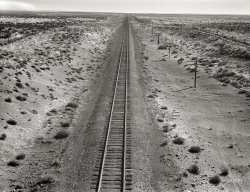
- Oregon Greaser: 1942
- July 1942. "Grant County, Oregon. Malheur National Forest. Greasing a logging truck." Medium format ... Posted by Dave - 08/28/2022 - 2:13pm -
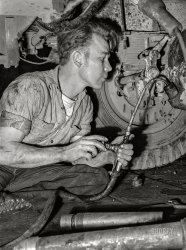
- Astoria, Oregon: 1944
- "Astoria '44" is the latest Kodachrome from Navy photographer's mate Don Cox. The view here is looking west along Commercial Street at the intersection with 14th. View full size.
Nice, shiny pavement very photogenic Don was fortunate to ... Posted by Dave - 03/24/2021 - 10:54am -
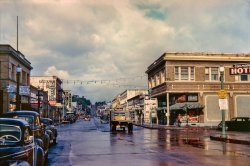
- Oregon: 1950s
- ... and his family camping in what I've deduced is probably Oregon in the 1950s as the plate on the right is an Oregon plate and the surrounding terrain in other photos suggest a north coast ... Posted by Tony W. - 09/17/2011 - 8:24pm -
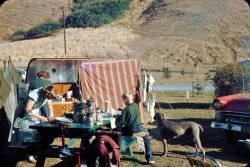
- No End in Sight: 1939
- ... Pacific tracks through the unclaimed desert of northern Oregon, 10 miles from the railroad station at Irrigon. View full size. 4x5 ... if those tracks are still being being used?
Irrigon, Oregon Can't be certain of the status of the rail line. It would be a Union ... Posted by Dave - 12/31/2007 - 1:42am -
![No End in Sight: 1939 October 1939. Western Pacific tracks through the unclaimed desert of northern Oregon, 10 miles from the railroad station at Irrigon. View full size. 4x5 nitrate negative by Dorothea Lange for the Farm Security Administration.
No EndThe picture is a beauty. I can't stop staring at it. It makes a great case for the Flat Earthers. Anyone know if the land's been reclaimed or if those tracks are still being being used?
Irrigon, OregonCan't be certain of the status of the rail line. It would be a Union Pacific line now and from Google Earth I do know that there is a rail line running east to west through the town of Irrigon, Oregon (what a great name), but I can't verify that this is it. In looking at the Google Earth images of this place I noticed these circular areas of presumably irrigated land along the rail line (Irrigon, Oregon, irrigation!) so it would seem that this area is being "reclaimed." I do know as someone who grew up and still lives in Saskatchewan the concept looks entirely foreign. Talk about crop circles!
Railroad at IrrigonIrrigon is near Hinkle, almost on the banks of the Columbia River. Western Pacific never got to Oregon except by trackage rights on the Great Northern "Northern California Extension" from Klamath Falls, finished just in time (1931) for the depths of the Depression, but now possibly with its heaviest use ever. The track shown is now and has been for at least a century Union Pacific. Oops, wait a second -- depending on the actual location, that particular piece may have been lifted on account of river work, as Terraserver indicates a dead end at Irrigon. Perhaps it was originally Oregon Railway and Navigation, but the dog ate my homework.
From a bridge?The pic was taken from some height over the tracks. I wonder if it was taken from a bridge.
IrrigonNot that far from where I live, and it doesn't look that much different today.
[I drove across Oregon to Idaho in 2000. The high-desert part was gorgeous. - Dave]
(The Gallery, Dorothea Lange, Railroads)](https://www.shorpy.com/files/images/8b34939u_0.thumbnail.jpg)
- Rockaway Bungalows: 1910
- ... ? - Dave]
Well I've heard of Rockaway Beach here in Oregon . :)
Re: Bungalows The were seasonal at first. More info at the ... Posted by Dave - 08/04/2012 - 3:56am -
![Rockaway Bungalows: 1910 Vacation bungalow colony at Rockaway, Queens, c. 1910. View full size. George Grantham Bain Collection. Note "front yards" of sand decorated with seashells.
Sand in QueensI wonder if any of the buildings are still standing. Since they are tract of small bungalows, I wonder what company supplied that lot for workers to live in.
Sand in...Queens?! Wow.
[Never heard of Rockaway Beach? - Dave]
BungalowsWere these for living or vacation rentals? They sure are cute. Does anyone know how far from the water they were?
Rockaway[Never heard of Rockaway Beach? - Dave]
Well I've heard of Rockaway Beach here in Oregon. :)
Re: BungalowsThe were seasonal at first. More info at the Beachside Bungalow Preservation Association:
By the 1920s, Rockaway Beach was the poor man's Riviera. It had a six-mile long boardwalk lined with amusements, and thousands flocked to the beach every summer weekend. Many families rented tents for the entire season, while those a little more affluent rented small bungalows. The concept of the bungalow in America was well established by this time as they were built for summer communities on both coasts. The plans could be purchased from catalogues and were designed in numerous styles.
This last remaining bungalow colony was built by Richard Bainbridge in the 1920s. The one and a half story houses all have front porches and pitched roofs. The design and style vary from street to street. Some of the bungalows are in a Spanish Revival style of stucco with wood trim and green the roofs, and others are in an English Tudor of brick. Lacking heat, they were closed for the winter months. The lanes leading to the beach have permanent easements for common access.
As development pressures change the Rockaways, this small district has become endangered. But it would be appropriate to preserve and restore this remnant of past summer amusements.
The yards are super.The yards are super. Send the kids down to the beach to bring back sea shells to decorate with! Talk about a family project.
Rockaway BungalowsI'm pretty sure these are not there anymore. In fact Rockaway Beach today is quite run-down. If you take the A Train out there, these must have been between the tracks and the water, where there are now streets with no houses. Only weeds.
Sadly, most of theseSadly, most of these bungalows are gone, as Doug points out above. There are only a few left, and they face demolition by developers who want to turn the Rockaways into yet another bland housing development. These were vacation homes for folks in Manhattan and the other boros, not company houses for factory workers. How close were they to the beach? How does less than a city block sound? In the Rockaways, as at Coney, Manhattan, Brighton, and other New York City beaches, the streets are set up perpendicular to the beach and are only a few blocks long. The last block actually ends at the boardwalk. Across the boardwalk is the beach. The Ramones were from the Rockaways.
Beach 29th streetMy family rented a bungalow on Beach 29th street until I was around 12 years old. As soon as school was over, my parents would pack up a van and off we went until Labor Day. It was the most amazing summers of my life. No locks on doors, showers in the backyard, fireworks Wednesday nights. My parents belonged to a group called FROGS- Far Rockaway Ocean Goers. The Bungalow owners, Mr. and Mrs. Herman, would let my Dad come before the season to fish. The last time I was there was about 36 years ago. It was so sad to see the destruction of these amazing bungalows. Ours was white and green, and all the furniture inside was painted a sticky tacky gray. My Grandma and Nana lived a few blocks up in a rooming house. It was very sad to watch as these homes burned to the ground. Such a day-gone-by era.
Beach 29th StreetHi!
I am very curious exactly where on 29th Street the bungalow was. I lived on 29th just off Seagirt Blvd. It was a year 'round dwelling. The area was VERY crowded during the summer and VERY empty from after Labor Day until Memorial Day.
Do you have any pictures from there? I would love to see them!
Thanks,
Marc
Far Rockaway refugee now living in Bayside, NY
Rockaway BungalowsThere was nothing better than spending the summer in Rockaway. Most of your family members rented bungalows in the court. Everyone was out every night. The beach was just a few steps away. Fathers came out only for the weekends, even if you lived in Queens...
Beach 107 StreetMy aunts, grandmother and uncle would whisk us away to Rockaway the minute school closed for the summer. We would stop at Weiss's for fish and chips, then drive over the old Cross Bay Boulevard bridge and see the top of the roller coaster and the ocean beyond. In a few minutes we would be at our bungelow in Highland Court, the second one in. We thought we had arrived since we had a hot water heater. It was a great place for kids to grow up. Every day my sister and I would open the window with the sun shining down on us. We would get into our bathing suits and run to the beach, riding the waves until we were dragged out by our relatives.
Beach 106 StreetBetween 1951 and 1958 or so I stayed with my good friend Donald Sullivan and his family in bungalows on Beach 106 Street. I don't remember the court name - if it had one. I do seem to remember Highland Court but this was centuries ago and memory may play tricks.
Sand in QueensA similar group of bungalows still exists in the Breezy Point Coop and Roxbury in Queens. Many have been expanded and converted to year round use now, though some are still used only for the season. They refer to Breezy Point and Roxbury as the "Irish Riviera" due to the strong Irish presence.
B. 29th bungalowsI know EXACTLY where you were. My grandmother too had a bungalow, about 5-6 before the boardwalk ramp. They were on the left side, because on the right side was a parking lot or a building (I can't remember it exactly). But up the block was two hotels - the Regency and another one. They were both owned by the same people - Mr. and Mrs. Hecht, german/lithuanian-jewish folks. If you remember, there was a wooden bridge that connected the two buildings, and the courtyard was shared by the two. The showers were both underneath the front of the buildings behind the, lattice and then common showers/bathrooms in the hallways. There was one public phone on each floor and a television on each floor. When my grandmother could no longer stay in the bungalow (either they were sold, torn down or condemned), she went into the Regency Hotel. She was in the basement which was very cool in the summer. They dodn't need air conditioning.
The last party of the season was Mardi Gras. My grandmother, being on the heavy side, loved to wear blackface makeup and put her hair up with a tied kerchief - she was "Aunt Jemima."
I only wish I had a place like 29th street to bring up my children in the summers. We ended up renting cabanas in Atlantic Beach from when they were little, then moved to Atlantic Beach, but retained memberships at the beach club. We can't get the sand out of our shoes!
Belle Harbor's Bungalows I was searching for a picture of Weiss's Restaurant and stumbled across this site. I found one taken before the war, but was hoping to find one more recently, like late 1950s or early 60s. Looking at the group of bungalows, there were similar ones along the beach 2 rows deep at B129th Street in Belle Harbor, Rockaway. They looked very similar to the ones in the pics if memory serves. I was there last year and although they still occupy the same footprint, most have either been completely reconstructed or torn down and replaced with more modern ones. I recall every summer going to the beach and seeking out the "city" kids here for a few weeks. We made lots of new friends every summer. Then there were the bungalows out on RockyPoint/BreezyPoint.
My mother spent her childhood summers, probably right there in that picture. Her parents owned their own bungalow. I have a picture of it from around 1941. Mom's 83 and I'll have to print this off and show it to her.
Maple Court, Beach 28th st.I've been searching for info on Far Rockaway. I've been strolling down memory lane thinking about my wonderful summers there. My family rented, and we stayed for a total of five summers. The last two were in Maple Court, which, I believe, was on beach 26th or 28th Street. Before that we were in B Court and A Court on 28th. I agree with the posters who spoke of these summers as paradise! I felt truly free there. And yes, nothing was locked up. There was no schedule to keep. Just pure fun. My last summer there was in 1969. I remember this because of the moon landing. We returned home from the fireworks display on the beach and watched it on TV. My grandparents owned a fruit store on the main street, and they stayed at a wonderful hotel called the Manor. My happiest memories from my childhood are from Far Rockaway.
Maple Court bungalowMy family purchased a bungalow at 29 Maple Court in 1969 when I was 9 years old. I too had the greatest memories there. We took so much for granted thinking everyone lived as we did. Now I realize how lucky we were back then. Being able to stroll down the street to the boardwalk, watching the fireworks Wednesday nights, and winning prizes at the arcade games are fond memories. Do you remember the pizza shop on the corner? Because the bungalows were so small and cozy, to this day I prefer smaller spaces. Thanks for letting me relive those memories for just a short time.
The EmbassyWe stayed in the Embassy on 29th Street (right next to the ramp to the beach). Many of my friends were in the bungalow courts between 28th and 29th. We stopped going in 1967 but those were the best times -- those summers were magical. My husband and I went back in 1998. There is a school where the Embassy used to be and nothing much else. I went down to the beach and I cried.
Who were your grandparents?Carolyn, my parents owned the Manor at 2400 Seagirt Blvd (beach 24st). My last summer on Rockaway Beach was 1967 just before I entered the Army. My parents and I moved to South Florida shortly there after. I was 6 miles from the DMZ in Vietnam when we landed on the moon.
Fruit storeCarolyn, if memory serves (pretty fuzzy by now), your grandparents were the Lebowitzes. The fruit store was on Edgemere Avenue just off Beach 24 next to Willy's Market.
If I am right, I am amazed.
The EmbassyMy family had a bungalow on B29th Street on "the ramp" from the 1950s until around 1970.
I got thrown out of the Embassy by the owner because we didn't live there. I bought ice cream at the candy store under the porch of the hotel.
I saw the school, it was a bummer. I remember Lenny's, skee ball, Jerry's knishes, Sally & Larry's pizza, movies on the boardwalk, Dugan the baker, softball games, basketball in the parking lot. I used to sell lemonade to the ball players on hot days. Memories ...
I remember a girl named Cherie or Sherry. She had a boyfriend, Arnie. I used to hang out with Arnie's brother Marvin.
lmc2222@aol.com
Far RockawayI also have childhood reminiscences of Far Rockaway. My family lived in a small bungalow rented for a group of Russians in 1970s (yep, I am Russian, living in Moscow now). I was 3 or 4 years old at that time, so I do not remember much. What I know is that these are one of the brightest memories of my early childhood. My pa said the house was really small. I do not know what street it was on, or if it still exists.
What matters are the snapshots of my memory: me sitting on a porch on a rocking chair, and the arches of the porches, of the same form and shape, go all the way down to the ocean. Me playing in sand, building garages for toy trucks, with other children running from waves that seemed - wow - so really huge. And above all and around all, the salty smell of Atlantic, which is different from any other seaside smell.
Great pity the place is devastated today. Hope that everyone who has ever had good times in Far Rock keeps his own memory snapshots of the place, where it looks as it really should.
Fruit StorePeter, you have an incredible memory! My grandparents were the Leibowitzes. That's such a specific memory. Did you know them personally? I would love to hear about any memories you have of them or the store. Were you a child at the time?
The EmbassyCheri, I can understand your crying. I went back many years ago and was also upset to see the area so demolished. At that time, it seemed the only bungalow left standing belonged to a lady we were all so afraid of on Maple court. She seemed to hate kids (probably we just annoyed her mercilessly!). But going back as an adult, I saw her situation quite differently. The bungalow was all she had, and so she stayed there while everything around her seemed to be destroyed.
Maple Court BungalowLillian, we must have known each other since we were there at the same time, and we were around the same age. I was in the first bungalow on the right, facing the main street. You might remember the pile of junk in front of the house (left by the owner, which we were waiting for them to take away!) Where in the court were you? I remember a girl named Elena, and a boy everybody had a crush on named Eddie.
The ManorWow... your parents owned the Manor! What an interesting and exciting experience that must have been. If I recall correctly, there were an eccentric bunch of characters staying there.
Carolyn! What a great happening!Hi Carolyn,
Glad you found me on Facebook. Your ability to put me together with my earlier Shorpy post was remarkable, so I am posting this for the benefit of "Shorpy page readers."
Your recollections and mine from the 1960's certainly attest to how great having the internet and pages like Shorpy's are. (Shorpy..thank you!) The fact that I remembered your grandparents is somewhat unique cause I can't remember anyone else's grandparents from way back then, other then mine. I must have really liked them and was destined to cross your path again. I remember sitting and talking with them on porch of the Manor in one of those green rocking chairs. They were "grandparent" types, had a European accent like most grandparents back then, and easy to be comfortable with.
Just to put things into focus, I am now 63. That was back when I was 16 or 17 and younger, but your grandparents returned to the Manor for quite a few summers in the 1960s. How could I have remembered your grandparents' name? I too am amazed and flabbergasted.
Memories of Far RockawayYes, this website is truly wonderful for allowing us to stroll down memory lane and recall the sights, smells and feel of Far Rockaway... and what an extra treat for me to find someone who actually knew my grandparents. Thank you Shorpy's for allowing us this exchange of information and memories... and thank you Peter for your kindness and your very sharp memory!
Far RockawayMy sister directed me to this site. We stayed in the Jefferson Hotel, right between Beach 29th and 30th, next to the Frontenac. My good friend Faye's grandparents, the Kratkas, owned the Embassy and both Faye and I worked the concession stand which her parents ran.
The memories of the boardwalk are still strong. Not only did we have the luxury of a fantastic beach at our doorstep, we also had nighttime fun. Cruising up and down the boardwalk -- eating pizza at Sally & Larry's, or Takee Cup (originally called Tuckee Cup until the owners got disgusted of painting out the alternate name it always received over the winter months) and listening to Eddie, with his ever-present songbook, sing requests. All added up to good, clean fun.
I left in 1968, went back from time to time, but haven't been back in years. Unfortunately, you can see enough from Google Earth.
My two auntsMy father's two aunts had a bungalow in Rockaway Beach in the late 50's early 60's. It had flowered wallpaper and a musty smell, but it was the most interesting home I have ever been in. I was allowed to leave and explore without my mother's glare. I cannot tell you what food we ate there. I have no memory of meals which is odd. I do remember being bitten by my aunt's dog, which scared me for a long time. I think their names were Bernice and Ruth Cohan. If you have any thing to share please do.
thanks, Mary Donaldson
neversynvr@aol.com
Twin HousesThe houses with the bridge were known as "the twin houses", possibly the Claremore & Edgewater, both owned by the Hechts. I spent the happiest summers of my life there!
Like Cheri, I've wanted to return, but haven't as I know how sad it would be. Better to revisit in memory, sometimes in dreams.
I probably know Cheri (from Arnie & the Joey days) and Les rings a bell, as does singing Eddie...
Marcy
Sand in my shoes on Beach 107thMy mother's family went to Beach 107th in the summers of 1917 through 1929. After the Depression hit they couldn't afford it. I still have photos of that period.
In 1951 our family went down to the Rockaways and rented a bungalow for the season. The courts I remember were Almeida and Holmenhurst.
My dad came only for the weekends, arriving Friday evening. The first thing he did was put on his trunks and head for the beach with me. When he hit the ocean you could see all his cares and worries leave. At night the parents would gather on the porches and play cards, drink a Tom Collins or have a beer and just have a good time.
As a 10-year-old I wondered what was so much fun doing this every weekend. It occurred to me many years ago that boy, did they have it made. Sitting on a porch with a nice summer drink, a cool ocean breeze along with good friends to talk with and play cards with. Life was so laid-back and simple then.
Does anyone remember the doughnut shop Brindle's or the bakery Dudie's? What about Nat's Ice cream shop, where you could get a walk-away sundae. Bill's Deli had the best salads and cold cuts.
Wonderful summers that will always keep me warm in the winters of my aging mind.
Beach 28th Street & A B and C CourtsI too remember the pizzaria on the corner of Beach 28th street. I remember my friends Randy, Shmealy, Risa, Brenda and Jody. I don't remember Shmealy's given name, but I remember he was hyperactive and a lot of fun. Made up a song from the commercials of the time for Halo Shampoo. "Halo Sham-poo poo, Ha-a-lo! Jodi's mom didn't want me hanging around Jody because I blinked my eyes too much. Oh well. HEY: Jody from Beach 29th street who wrote a post here on 11/12/2007 - I wonder if you're the Jody I remember!? I hung around with Risa a lot. I still have a photo of us and my dog Suzie on the porch of my Bungalow. I once disappeared into the Courts of Beach 28th street while walking my dog. I ended up talking to a boy for 2 hours, not knowing my parents had called the police and had an all-out search for me. My father finally found me. I was the talk of the town that day! I hope someone remembers these people or IS one of these people, or remembers the lost girl incident and would like to contact me at orangechickens2@aol.com. It would be wonderful to hear from you!!
Anyone remember dogball?My dad wrote about playing dogball on the beach at 110th Street on his blog at willhoppe.com.
I'm going to show him all of your comments later tonight.
The BungalowsI was born in Far Rockaway in 1942. I lived there for 16 summers. My dad owned a small grocery on B 28th street. It was the best time of my life. Maple Court faced 28th. To me it was a very exotic place. The renters/owners vacationed there, my dad was a workman. We lived in roominghouses with a bath on the floor. One year I begged my dad to live in Maple Court and we got a small apartment in the back of a bungalow there. The bungalows were the BEST.
Rockaway native from HammelsBorn in Rockaway in 1941 at Rockway Beach Hospital. Went to PS 44, JHS 198, Class of '59 from Far Rock. Worked as a locker boy at Roche's Beach Club in Far Rockaway. For two summers I worked in Rockaway Playland. I lived on 90th, where my parents rented out the bungalow in the back of our house every summer. My father at the end of his years as a waiter worked in Weiss's dining room, and the Breakers restaurant on 116th Street.
I met my wife in 1965 at McNulty's on 108th Street. She was from Woodhaven and Breezy Point. We got married in '68. I am writing this on the back deck as we are still enjoying the summer weather here at Breezy. We both still have sand in our shoes.
Our 1940s summersA group of Bronx families spent the summers of the early '40s in a few bungalows. Sundays the working fathers would appear for a community breakfast. We celebrated V-J Day with a parade on the boardwalk. Takee Cup was a part of our diet. A noodle cup to be eaten after the chow mein was devoured. The ultimate hand held food treat.
Beach 25th StreetI grew up in Far Rockaway in the 1960s and 70s. We lived in the Bronx and rented every summer on Beach 32nd Street (now two big apartment buildings -- Seaview Towers). When I was 9 or 10, we moved to Beach 25th year-round. The summers were great -- we didn't wear shoes most of the time.
Every Friday night, "Bingo Al" held a game in the court behind the bungalows, between 25th and 26th. One summmer he had a "Chinese auction" and dressed up in an oriental robe and Fu Manchu mustache and beard.
Many of the residents got seltzer water delivered in bottles at their back porch. They would gather in the evenings out in front of the bungalows and talk and joke. I would lie in my bed, with my ear pressed against the window screen, trying to listen, and also trying to stay cool -- no air conditioning.
Sol "The Cantor" Gerb would play his little electric organ as people sipped their drinks, chatted or played cards. It was like a different world from the rest of New York.
I read where one commenter talked about the bungalows rented for the Russians. This was on Beach 24th Street. They worked at the United Nations and rented a block of bungalows. Every Monday morning passenger vans would show up to take them to work at the UN. We played with the Russian kids. They were a good bunch. I stayed over at one of their bungalows and we had crepes for breakfast. I had no idea what crepes were! I learned to play chess, as the Russians were crazy about it. I recall one time when members of the Jewish Defense League blew up a small BMW belonging to one of the Russians. The news came out and I was in the background, behind the reporter. A sad time for Far Rockaway.
One of the amazing things was the backgrounds of the bungalow residents -- former concentration camp prisoners, Russians, Irish, Jews, some Italians and Greeks, but we all got along so well. A great place to grow up!
At the FrontenacMy family spent summers at the Frontenac from the late 40s until 1957. When I describe it to my daughter, I have to confess it was really more like a boardinghouse. My mother, father and I shared a room that was also the kitchen. Bathroom on the floor, showers were out back for when you came back from the beach. It was great community. Juke box for dancing, card room for gin and mah jongg and the television on the porch.
I loved Jerry's cherry cheese knishes. I remember the movie theater on the boardwalk in the 30's (it could barely be called indoors)
I bought the News and Mirror off the delivery trucks for 2 or 3 cents and sold them for a nickel.
My parents would pay the guy who ran the first aid station under the boardwalk to hold our beach chairs overnight so we wouldn't have to "schlep" them back and forth.
We played softball on the blacktop parking lot on 29th street right off the boardwalk.
My wife, who I did not know then, stayed with a friend's family in a bungalow on 29th street. I think her best memory was playing Fascination.
Best summers everI used to stay at my grandmother's bungalow on B 28th st. in the mid to late 60s. Those were the very best summers ever! Walking just a few yards to the boardwalk and beach, pizza from the store on the corner, hanging with Howie and the crowd there. Playing Fascination for a dime, huge french fries in those cone cups.
If anyone knows the whereabouts of Howie Young I'd love to get in touch with him. My email is belongtoyou@hotmail.com
Hugh McNulty Hotel, Rockaway BeachI am trying to learn about Hugh McNulty's Hotel. I am not sure what street it was on, but there was also a bar in it. Hugh was my mum's uncle and her father came to stay with him and work for him. The time period may have been 1924-1930. I know the hotel was still in operation in 1953, as my grandmother visited him at that time. Any help is appreciated. libtech50@comcast.net
Edgemere memoriesMy family lived many places in the Edgemere section of Far Rockaway (I don't know the exact boundaries of Edgemere, if there were any), but my memories centered on Beach 48th Way and Beach 48th Street. Fantastic place to spend the summers and escape the hell of the South Bronx. I had wonderful Jewish friends and I worried that they would go to hell because they weren't Catholic. Now I laugh as such perverted theology, but back then it was serious stuff.
I loved the beach, the ocean, the starts, the jetties, playing every group game known to humans, going over the the "bay side" to play softball with the "project people" -- those who lived beyond the marshes and spent the winter there.
No doubt about it, the best part of my childhood was Rockaway. Too bad it was taken away from us and to my knowledge, still is just a bunch of sand with no houses where we used to live, right near the boardwalk.
Beach 48th Way, RockawayIn the early 1960s there were two brothers that were lifeguards when my family was there, Dennis and Tom Fulton. Anyone remember them? Also there was a man named Warren who would feed pigeons at the end of the block every day. My parents would rent a bungalow in the summer months to get us out of Brooklyn for awhile. Great memories.
Rockaway, a kid's dreamI remember growing up in Rockaway. We had two boarding houses on Beach 114th Street. When my mom was a kid, Carroll O'Connor, his mom and brother Frank stayed with them. He returned to see my parents back in the mid-eighties and I received one of his last e-mails before he died. I worked my way bartending at Fitzgerald's on Beach 108th and Sullivan's on Beach 116th (1967-1970). You could leave the house at 7 years old, walk to the beach without crossing the street and never had to worry one bit. The neighbors looked out for everone's children. Great memories and thanks to Shorpy for an incredible site. Brilliant job!
Cohen's CourtThe picture above is very much how I remember the bungalow court where my parents rented in the summers of the early 1950s. I think my mom said it was Cohen's Court. Ours was at the end of the court on the left. I don't remember too much, I was really little. But I think there was a center row of garden where parents hid treats for us to hunt. I remember a corner candy store we kids could walk to and my mom confiscating a tube of plastic bubbles I bought. I guess she thought the fumes would get me high or something. There was a little girl across the court who would stand on her porch in a towel and flash us once in a while. And I have a memory of being on the beach with my parents, I in the sand and my mom in a beach chair, and my dad taking me into the water. I went back with my parents in the early 60s because they were thinking about renting it again. But it was so musty and dirty and ramshackle that they decided against it. I had a girl friend with me and I have to say I was embarrassed about the way the place looked and smelled. Too bad, that bungalow was a great summer getaway for a working class family from Brooklyn.
Elisa on B 29thWas your grandma named Bessie? I lived in the Claremar, one of the twin houses, and I remember her. Did you have a brother too? My sister, parents, grandmother and baby brother and I all lived in two rooms in the basement. I remember Crazy Eddie and his huge black book of songs. Tina and Elise ... Elliot ... Donna ... Jackie ... smiling in memory!
Palace HotelThe last place my family stayed at for quite a few years was the Palace Hotel on Beach 30th Street right near the boardwalk. Those were the days my friend. All the arcades and food places on the boardwalk, Cinderella Playland for the little kiddies, the Good Humor man , Ralph was his name.
Life was simple. No internet, cell phones or video games yet we had great times and wonderful memories. We played board games and cards and rode our bikes. The guys played baseball in the parking lot adjacent to the Palace Hotel.
The team was a mix of every race and ethnicity and everyone managed to get along and looked forward to playing together the next Summer. The beach was the best. Dads could go to work and come back every day rather than only on weekends as they do in the Catskills. Such a shame that this no longer exists. The last summer I went there for a few weekends was in 1976.
The JeffersonMy grandparents rented a place in the Jefferson for many years. I have great memories of the place, the back stair cases, the porch, and the beach just a short walk away. Does anyone have relatives who stayed there?
Rockaway summersI spent virtually every summer till the age of 22 in Rockaway. We stayed on Beach 49th till they knocked them down, then kept moving to the 20's.
Best time of my life. My family was unique -- Italians in the Jewish neighborhood and we came in from Jersey! My mom grew up in Brooklyn and her family started coming in the '40s!
Wish I could connect with friends from back then. If I sound familiar please let me know. You would be in your mid to late 50s now.
Rockaway Beach Bungalows on PBSI received a message, last night, from my girlfriend who stated that "The Bungalows of Rockaway" was on PBS @ 8PM. I started watching at 8:30 and to my surprise I could not stop watching.
I was born at Rockaway Beach Hospital and I am a lifer. I never lived in a Bungalow but I have always wanted to purchase one. I was taken aback by the fact that there were at least 6,000 bungalows and now there are approximately 300 (big difference).
I also found out in this documentary that there is hope that the bungalows can be landmarked and I hope that it happens. The bungalows are a unique attraction to this area and I hope that the 300 remaining can be preserved.
Elisa on B. 29th Street - the hotelsTo Anonymous Tipster on Fri, 08/13/2010 - 3:15am - YES! My grandmother was Bessie. I do remember your family - your grandmother, parents and the little ones. Your mom wore glasses and had blonde hair. She always wore her hair pulled back and up on her head, curlers in the evening.
Also, Harry and Dottie lived in a large room in the corner of the basement of the hotel.
I have 3 brothers and one sister. My Aunt Rose and Uncle Leo used to come to the hotel as well to visit with Grandma Bessie.
Please e-mail me @ medmalnursing@msn.com
Sally's Pizza and the Lemon & Orange Ice StandI spent the best summers of my life on Beach 28th Street. Coming from a Bronx apartment, it felt like our own private house. Our own family doctor came out to Rockaway every summer and stayed on Beach 24th Street. I now wonder what happened to his patients during July and August. How come nobody has mentioned Sally's pizza, on the boardwalk around 32nd Street? You couldn't forget Sally-- with her bleached blond hair, tight pants, and backless highheels. Near Sally's was the fresh lemon and orange ice stand with the fruit stacked against the wall. The ices even contained pits. No artificial coloring or corn syrup in those ices.
Grandmother's bungalowsMy grandmother owned 10 bungalows on the beach on 35th Street from the 1930s thru the 1950s. They were the ones nearest the water. I loved going to help her get them ready each spring and clean them up each fall. Playing on that wonderful empty beach at those times of year with no one else in sight.
We lived in Far Rockaway at 856 Central Ave., so going to the bungalows was not a long trip. Great memories.
Mom's RivieraMy mother loved Rockaway so much that we called it "Mother's Riviera." She couldn't have cared less about the beautiful beaches across the ocean in France or Italy, for Rockaway Beach was her greatest joy. We spent many summers in a bungalow court on 109th Street and my grandmother and her sisters also spent their youthful summer days in Rockaway Beach. So our family goes back generations loving Rockaway.
Every Memorial Day the court always had a party to celebrate the beginning of summer and the courtyard inhabitants were usually Irish. The courtyard came alive with Irish songs and jigs and reels. Of course, the people of the courtyard always chipped in for a big keg of beer. It was repeated on Labor Day as we all said our goodbyes to our neighbors and to our beloved Rockaway Beach.
Saturday nights in Rockaway were spent at the closest Irish bar and some nights the local boys slept under the boardwalk after having a wild time. They always managed to get themselves together for Sunday Mass or otherwise they would get holy hell from their families.
Sands of TimeI spent every summer in the Rockaway bungalows from the fifties until the mid eighties when we were forced to leave because of the deteriorating situation. I was a child on Beach 49th and remember George's candy store where you could get a walkaway sundae for 50 cents.
Sue, I remember the Fulton brothers, who were lifeguards. Handsome devils, had a crush on Tom when I was 14. Times were safe. There were a thousand kids to play with. We went from 49th, 40th 39th, 38th, 26th and finally 25th Street with my own kids trying to hold on to that wonderful way of life. Unfortunately it disappeared.
Some of the best days of our liveswere spent on Beach 25th. When I was 12 (1936) until I was 17, we stayed every summer at my grandmother's at Beach 66th Street. Those were glorious days on the beach. The boardwalk at night was wonderful, too. We played pinball, and games of skill for 5 cents to collect prizes. Bottled soda and ice cream were 5 cents then, too. We used to run up to the boardwalk to eat the delicious knishes. My summers at Far Rockaway were the most unforgettable of my growing up. Tuna fish and bologna sandwiches on a roll never tasted as good as it did at the waterfront.
In 1961, when I was married with children, we rented a bungalow on Beach 25th and loved it! It was a rainy summer and we spent a lot of time in Far Rockaway shopping, eating and going to the movies. Every sunny day, however, we quickly rushed to the beach to enjoy it with family and friends.
The Jefferson, Beach 30thI stayed with Grandma and Grandpa every summer for years in a small room at ground level. Grandpa would take me to the beach in the morning, then off to the stores on 24th Street. The back patio was for dancing on Saturday night and the concession inside had bingo. The porch! As I grew up to teenager, I met Ronnie Schenkman and family on the second or third floor (used the back staircase). I don't remember where Eleanor stayed. Crazy Eddie and his songs. Hal and his girl of the night. Warm nights and days. Very sexy!
As a working girl I still took the RR to Far Rockaway, then the bus to Edgemere. Took my children to visit Grandma when it was becoming sad looking. Then went to the area years later and found a burnt shell with a wicked fence surrounding it. Took pics and had a good cry. We are all lucky that we were able to experience the wonderful warm sun and sultry nights.
Belle Harbor BungalowsI think the two rows of Belle Harbor bungalows on Beach 129th to which another person referred were probably the Ocean Promenade Apartments. I have very happy memories of living there in the mid-i950s in the winter.
Beach at 37th streetWhat a trip to see all of the these comments. I grew up and lived year round on Beach 37th until 1950, when we moved to Bayside. Takee Cup was a treat as well as the movie theater on the boardwalk, Italian ices and of course the arcade. For a penny you could get great photos of famous cowboys and movie stars.
Rockaway in 1958My family spent the summer in Rockaway in 1958. Most of our friends were in the court, but we were outside it on the main street. I don't remember the street, but I suspect it was around Beach 45th, as the El was right on the corner.
We had a bungalow with a porch. I was climbing on the outside of it, fell when I saw a neighbor's dog that I wanted to play with, and broke my wrist on broken concrete. Today, one would sue the owner. Back then, we just made do.
Later that same summer, I ran across the street to get Italian ices from the local candy store, but looked the wrong way crossing the one-way street and almost got hit by a car. I didn't think that much of it, but the woman driving was hysterical.
I also remember a movie theatre on the Boardwalk. In those days, an 8-year-old (me) could feel safe walking the boardwalk without an adult present. The back of the theater opened up at night so you could sit outside. I saw "The Colossus of New York" there, an incredibly bad "monster" movie.
Most of the bungalows in the Rockaways were destroyed by Hurricane Donna in 1960. So-called "urban renewal" took care of the rest. Now some sections of the Rockaways, especially those facing the ocean, are filled with expensive new condos.
The Jefferson 1950s I stayed at the Jefferson in the 1950s. It was far far away from the Bronx.
Our father worked two, sometimes three jobs, so my brother and I could escape the Bronx and spend each summer --the whole summer-- in Rockaway. Dad took the train to work every day. We turned brown by July 4th; skinny brown kids always running, scheming, cunningly evading the watchful eyes of Jewish mothers.
We played softball in the parking lot by the beach in the early mornings before the cars showed up. We played kick the can in the street, ring-o-lerio (sp?), off the stoop. And then there were the long long days on the beach, hopping on hot sand from blanket to shore, waiting the magic 45 minutes to go in the water after eating lim and sandy salami sandwiches, early versions of body-surfing, acting like we couldn't hear our mothers calling that it was time to come in from the water. Crawling into the cool dark sand under the boardwalk.
Some kid named Howie always had a piece of fruit in hand, juice dribbling down his chin. And then there was a kid whose own family called him "Fat Jackie" -- at least that's how I remember it. Once in a while we were treated to Takee cups or lemon Italian ices, and chocolate egg creams. Always sneaking off with so much watermelon that your belly ached, and sand -- always sand -- in your bed.
Jumping off the wooden steps to the beach, higher and higher, until you dared to jump from the railings along the boardwalk. I think it was Friday nights we would go to the boardwalk to watch the fireworks display from Playland. Flying kites over the surf when the weather cooled, and sneaking out to the Boardwalk to watch, awestruck, huge summer storms -- was it hurricane Carol?
Evenings with men playing pinochle, women playing mah jongg. Ping Pong, hide & seek around the Jefferson. Costume parties with fat hairy men wearing grass skirts and coconut shell brassieres, and mothers with painted mustaches and sideburns, wearing huge hipster hats, chewing cold cigars.
Then, dreaded September, back to school and insanely diving under your desk to practice for the upcoming atomic war, or wondering whether you were one of the kids who got the fake Polio vaccine. But somehow, during those summers at the Jefferson, there was nothing to fear. Nothing at all.
Beach 45thDoes anyone remember Scott Whitehill or Laird Whitehill? If so, please e-mail me at scott@scottwhitehill.com
Moe's Grocery Store on Beach 28thBarbara posted a comment earlier about her dad owning a grocery store on Beach 28th Street. The name of the grocery store was Moe's, and they carried lots of things for a small store. I lived in bungalows on Beach 28th and Beach 29th Street. These were the most memorable times of my life. I only wish that I could go back and see and relive these wonderful times.
Beach 49thMy family and many of my relatives owned bungalows on Beach 49th and Beach 48th Street. We spent every summer there until the city condemned the properties. My father brought one of the first surfboards there in the early 60s. I have many fond memories of the beach and the friends I made.
(The Gallery, G.G. Bain, NYC, Travel & Vacation)](https://www.shorpy.com/files/images/01983u1.thumbnail.jpg)
- Navy Cooks: 1897
- Circa 1897. "Berth deck cooks, U.S.S. Oregon ." 8x10 inch dry plate glass negative by Edward H. Hart, Detroit ...
The rest of the boat I can see the mast of the USS Oregon from my office. It's a memorial in the Waterfront Park in Portland. ... Posted by Dave - 08/13/2012 - 10:03pm -
![Navy Cooks: 1897 Circa 1897. "Berth deck cooks, U.S.S. Oregon." 8x10 inch dry plate glass negative by Edward H. Hart, Detroit Publishing Company. View full size.
Eagle, Globe and AnchorAnd there's a Marine among them (perched on the ladder).
A pocketknifehttp://www.spanamwar.com/Americanuniformlanyard.htm
Lanyards were issued to all crewmen along with a single-bladed navy pocketknife, which was generally attached to the end of the lanyard. The other end of the lanyard went around the sailor's next, and could be drawn tight by pulling a "turk's head" knot as tight to the neck as was comfortable. By attaching the knife to the lanyard, the chance of dropping the knife overboard or losing it in some other manner was greatly reduced.
One of the few navymen who did not attach a knife to their lanyard was the boatswain or "bo'sun" who would attach his "pipe" to it. The pipe was a high-pitched whistle-like instrument which was used to issue certain orders.
The lanyard was approximately one yard in length (doubled, and therefore was made from about two yards of material) and made of a white cloth tape.
The rest of the boatI can see the mast of the USS Oregon from my office. It's a memorial in the Waterfront Park in Portland. I've often wondered about the ship, so these photos from her are very gratifying.
Where's a Bos'n when you need him?Ahoy mates, that's a pretty scurvy looking deck. And sticking a blade into the teak!
All I can say is that the Oregon must have been a pretty loose ship. In my Navy days, a ship with a teak deck was kept "Bristol" -- that's squeaky clean to you landlubbers. Holystone, seawater and sand every day. And if you had so much as a nail in your shoe, the Chief Bos'n would have your hide.
Holding the cigIs that a cannoli tube or are you just glad to see me?
Soap classicThe "Gold Dust Twins" is cool. Always heard about this stuff from my Grandmother. She is about the same age as these guys. Now I get to see it. I can take that off the list. Thanks Shorpy.
What's on the end of those lanyards?Besides the scarves (ties?), most of these guys are wearing a lanyard around their necks that ends in their left breast pocket. What's attached?
Fate of the OregonIn a burst of patriotic enthusiasm, the Oregon was partially scrapped at the begining of WWII, for the steel. The hull was used as a barge during the war, and eventually scrapped in the 50's.
Display your toolsNo doubt the gunner's mates had just taken their group picture in front of a stack of shells, and the galley crew felt compelled to display their weapons.
Tough cutsI'd say there were few complaints about the food, but we haven't seen the rest of the crew yet.
Take a PowderBaking or washing? Make sure you get the right one for the job!
Surprised No One Has Mentioned ItGuy with the cigarette: what the heck's with the paper heart cutout on his shirt?
[It's a handkerchief sticking out of his pocket. - Dave]
Navy cookingAnother interesting photo. Every man in the group displays the rate of Seaman Third Class (one stripe on the cuff) except of course the Marine and those who have their cuffs turned up. Not one has the rating badge of a Petty Officer on his upper arm. Wonder who was in charge?
That probably meant that cooking chores for enlisted men were turned over to the lowest rated and newest men. Officers of course had cooks and stewards to handle their food needs. Enlisted men didn't fare so well. The rating of Commissary Steward (enlisted cooks) didn't appear until about 1905.
(The Gallery, Boats & Bridges, DPC, E.H. Hart)](https://www.shorpy.com/files/images/4a14632a.thumbnail.jpg)
- Dead Ox Kids: 1939
- ... home in Sunday clothes. Dead Ox Flat, Malheur County, Oregon." Medium format nitrate negative by Dorothea Lange for the Farm Security ... sense because the area seems to be on the plains, and in Oregon that means major snow and bitter cold.
http://www.hamell.net/2010/07/dead-ox-flat-oregon/
The flats. Definitely the "dry " side of Oregon ! I live in ... Posted by Dave - 07/30/2012 - 2:45pm -
![Dead Ox Kids: 1939 October 1939. "The Free children in doorway of their dugout home in Sunday clothes. Dead Ox Flat, Malheur County, Oregon." Medium format nitrate negative by Dorothea Lange for the Farm Security Administration. View full size.
Saggjn' but not braggin'That young man second from left would certainly be "fashion forward" with the 5 inches too big in the waist pants but for A) I'm sure he's not wearing them that baggy on purpose and B) he'll make do because it's likely these or nothing he's got the sense to keep 'em up with a pair of suspenders.
Lest we think their home is oddHere's a blog (with a tip o' the hat to Shorpy) about Dead Ox Flat, and as you'll see even the town church was built Dug Out Style. Makes sense because the area seems to be on the plains, and in Oregon that means major snow and bitter cold.
http://www.hamell.net/2010/07/dead-ox-flat-oregon/
The flats.Definitely the "dry " side of Oregon ! I live in the state as well in a area known as Rabbit Flat, down in Klamath County. There were a few dugouts built way back when but they are long gone now.
Oregon FarmerWe are farmers! Okay, not that Farmers. The company insuring this home started out in the publishing business and branched out from there. Today, affilliates are all over the west, mostly offering Health and Life Insurance- Farmer-Stockman. Farm Progress (an ABC/Disney Company) now owns the original magazine publishing empire and still prints today.
Hand Me DownsI'm thinking, BamBam, that's he's stuck with Pa's hand me downs while his brothers get his old clothes. It's funny, today people just wear suspenders to simply wear suspenders, when this kid is wearing them because he has no choice.
Down in the dirtBut not down in the mouth. These kids are happy and they and their clothes are clean, even if a touch the worse for wear. No small accomplishments in the 1930s.
And cute little curtains hang in the windows, to boot. I bet this family is resourceful!
My GrandpaThis photo is of my Grandpa and 3 of his siblings. He's the one on the far left in the back.
[Great! Can you put names to them all? Had you see this photo before? - tterrace]
(The Gallery, Dorothea Lange, Rural America)](https://www.shorpy.com/files/images/SHORPY_8b35199u.thumbnail.jpg)
- Drugstore Farmboy: 1939
- August 1939. "Medford, Oregon. Half-grown farm boy on main drugstore corner in town." Not quite Lana ... 15 minutes starts right ... now. View full size.
Oregon Version Of the Texas drugstore cowboy.
Crying out for ...
Dorothea Lange took several pictures in Jackson County, Oregon in August 1939, including two of this young man. Should you want to go ... Posted by Dave - 06/03/2015 - 8:21pm -
![Drugstore Farmboy: 1939 August 1939. "Medford, Oregon. Half-grown farm boy on main drugstore corner in town." Not quite Lana Turner at Schwab's, even if the photographer is Dorothea Lange. Hey kid, your 15 minutes starts right ... now. View full size.
Oregon VersionOf the Texas drugstore cowboy.
Crying out for colorization.Here's another picture crying out for colorization. Hope to see it happen.
She was a "Bad Woman"Because the radio announcer was "That Way."
Screen GuideWith Joan Bennett on the cover, 29 years old at the time. Her big role that year was in The Man in the Iron Mask as Princess Maria Theresa. Her two great roles were yet to come, in Fritz Lang's The Woman in the Window (1944) and Scarlet Street (1945), starring in both with Edward G. Robinson.
Glow in the DarkThe alarm clocks with the black outer rim and white numbers are probably glow in the dark radium-painted numbers.
Use them to test your geiger counter.
Corner of Main & CentralYoung's Cut Rate Drugs, building is still there but redone.
.89 cents for a thermos.Where did we go wrong?
[89 cents, not .89 cents, which would be less than a penny. - Dave]
Like the Old Folks Used to Say ...His socks ought to throw party and invite his pants down
Give me Velvet1939 advert
Strange as It SeemsA syndicated cartoon strip from 1928 to 1970, at its peak in 1,300 newspapers. Other incarnations included books, radio shows and film shorts. Created by John Hix (1907-1944) who considered Strange as It Seems to be a library of “the curious, in nature and humankind, set adrift on the vast sea of public opinion with the hope that it will fulfill its mission to entertain and acquaint its viewers with some of the marvels of the world in which we live.”
Popular MechanicsSeptember 1939 issue.
Photoplay, September 1939With Shirley Temple on the cover.
Young's DrugsYoung's was one of a succession of drug stores in Medford's Palmer-Medynski Building, which was built by neither Palmer nor Medynski, but by Byers & Jacobs in 1884. It's among Medford's three oldest buildings--one of three known 1884 buildings to survive.
Dorothea Lange took several pictures in Jackson County, Oregon in August 1939, including two of this young man. Should you want to go to the files of the Library of Congress to find out more about them, don't bother--they have the prints, but no notes. The Farm Services Agency only retained notes and other supporting documentation when their photographers were on assignment, and Lange apparently took her Medford and other Jackson County photos "for fun," on her route in 1939 between the hop fields of Josephine County and the potato fields of Klamath County.
It's possible notes or memoirs about her Jackson County sojourn survive in her personal papers, at the Oakland Museum of California.
(The Gallery, Dorothea Lange, Stores & Markets)](https://www.shorpy.com/files/images/SHORPY-8b34619a.thumbnail.jpg)
- Cincinnati: 1915
- ... a city. There's an adventure around every corner.
395 Oregon Street The house next to the tracks next appears to be still there on Oregon Street. The Mount Adams & Eden Park incline is gone -- you can still ... Posted by Dave - 08/12/2012 - 2:59pm -
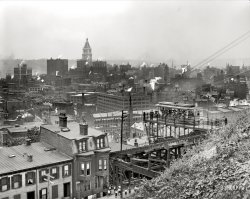
- Home Is Where the Tent Is: 1939
- ... project in one year." Willow Creek area, Malheur County, Oregon. Photograph by Dorothea Lange for the Farm Security Administration. ... top of Mr. Fairbanks' hat has a fossa of its own...
Oregon, finally! I've been looking for pictures from Oregon. Thank you, ... Posted by Dave - 09/08/2011 - 5:17pm -
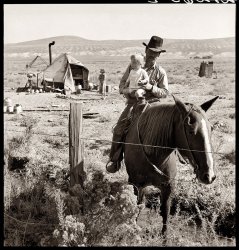
- The Crab Shack: 1941
- October 1941. "Waterfront of Bay City, Oregon, a fishing town." Medium format acetate negative by Russell Lee for the Farm Security Administration. View full size.
Oregon Coast Scenic Railroad Everything is still there as seen from the ... Posted by Dave - 03/21/2022 - 11:23am -
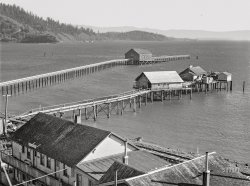
- Carnivale: 1941
- July 1941. "People in Vale, Oregon, for the Fourth of July celebration." Acetate negative by Russell Lee ... with all the runway nonsense, and this stuff here, in Oregon in 1941, is downright beautiful. All the clothing looks skillfully ... street U.S.A. Much of it survives.
Vale, Oregon scenes - July 4, 1941 There's video below for anyone interested in ... Posted by Dave - 02/22/2019 - 4:14pm -
![Carnivale: 1941 July 1941. "People in Vale, Oregon, for the Fourth of July celebration." Acetate negative by Russell Lee for the Farm Security Administration. View full size.
High fashionThe clothing here is outstanding. I sometimes force myself to look at slideshows of couture extravaganzas, with all the runway nonsense, and this stuff here, in Oregon in 1941, is downright beautiful. All the clothing looks skillfully homemade or easily purchased. That woman with glasses in front, holding the little boy’s hand, is just plain gorgeous. That blouse, the buttons, that waistband, the pants, even the saddle shoes – she’s a knockout.
[Her blouse looks like rayon. - Dave]
SimplicitySometimes I forget there was a time when everyone's clothing didn't bombard us with brand names and logos.
Main street U.S.A. Much of it survives.
Vale, Oregon scenes - July 4, 1941There's video below for anyone interested in seeing a wonderful slideshow of pictures from that day in Vale.
Seems most of the folks shown in the photo above are walking away (south) from a then-finished parade, as it was held on "A Street" to the north (east/west where the corner for the Vale Hotel is in the background). Maybe hurrying towards the fair?
[The fair is in the photo. See the Ferris wheel on the right? - Dave]
(The Gallery, July 4, Kids, Russell Lee, Small Towns)](https://www.shorpy.com/files/images/SHORPY-8c01704a.thumbnail.jpg)
- Dead Ox Flat: 1939
- ... their dugout basement home. Dead Ox Flat, Malheur County, Oregon." Medium-format nitrate negative by Dorothea Lange for the Resettlement ... used to take my brother and me on road trips out into the Oregon desert in the '70s. Can't say I've seen this particular house, but I can ... Posted by Dave - 07/30/2012 - 2:44pm -
![Dead Ox Flat: 1939 October 1939. "Mr. and Mrs. Wardlaw at entrance to their dugout basement home. Dead Ox Flat, Malheur County, Oregon." Medium-format nitrate negative by Dorothea Lange for the Resettlement Administration. View full size.
Been thereMy grandparents used to take my brother and me on road trips out into the Oregon desert in the '70s. Can't say I've seen this particular house, but I can say it's spectacular but forbidding land -- what a place to eke out a living in those days! I almost stepped on a rattlesnake curled up on the sunny front porch of a cabin we stayed in.
White lightningNote the whiskey jug with the cork in it. More appropriate in this context than, say, a case of Dom Perignon, right?
I'd give anything...please tell me you have a photo of the inside of that thing!....Thanks Dave..Um, I hope you didn't take me seriously about the "I'd give anything" bit.
[Click here. - Dave]
TwinsI guess it's true what they say: the longer you're married the more you start to look alike.
StrengthThis is an outstanding photograph. It shows the strength, cheerfulness, and determination of our ancesters that settled this country. Great it is that this photo was taken in 1939.
Doug Santo
Pasadena, CA
Color Their WorldThis is one of those few old-timey pics that would look better in color.
It couldn't look worse.
Waste not want notEven that worn out tire has been cut up and used for something.
banderboy: I almost had an original thought.
Optimism neededTo live in a place named like that ...
Dead Ox : no explanation needed there
Malheur : french word for misfortune or tragedy
Oregon : comes from the french word "ouragan" (hurricane)
Waste notI wonder what he did with the rest of the old tire behind the milk cans.
ps: Geezer- great minds and all that...I swear there were no comments up when I wrote that!
Previously on Shorpy ...Also seen here and here. With an interesting note from Scott Wardlaw in the comments.
Motel 6I believe this humble home may have been the inspiration for the Motel 6 franchise. And as Mrs. Wardlaw used to say, "we'll leave the light on for you".
Small worldAs soon as I saw the caption of this picture I thought, "I wonder if my Internet friend Scott Wardlaw is related to them." And lo ...
Glenn WardlawIn the photo in the comments, the boy at the table is the Wardlaw's son, Glenn. There is a 2006 photo of him here:
http://www.hereandnow.org/2009/03/looking-at-dorothea-lange/
The DugoutThe photo seems to show an albeit flimsy ground level building or buildings trailing off to the rear. Is there a reason that folks like them would prefer living underground vs fixing up those sheds as living space?
[The structure to the rear is the top of the dugout. Pit houses were at one time common in the West and Southwest. - Dave]
The rest of the storyThis photo says so much with so little. More here in a comment from Noel Wardlaw.
Little House In the PrairieMy father grew up in such a basement house in Indiana in the 1940s and 50s. He had 10 brothers and sisters, so 13 of them lived there. He left the day he turned 18.
Oregon OriginFYI, the real origin of the name "Oregon" is unknown. It's first known use was in 1765 - http://www.oregonlink.com/namingoforegon.html , quite some time before French Canadian Trappers were in the area to get the meaning from there.
There is some speculation that the word was gotten from Indians living around the mouth of the Columbia River during that time, but if so the tribe and their dialect were gone by the time Lewis and Clark showed up.
(The Gallery, Dorothea Lange, Great Depression)](https://www.shorpy.com/files/images/8b35208u.thumbnail.jpg)
- El Paso: 1903
- ... be mailed on application. -- Sporting Life
Oregon and Mills Based on the address of the old Grand Central Hotel and the ... line, this appears to be taken from the corner of Oregon and Mills (formerly St. Louis), looking almost due west. Just to the ... Posted by Dave - 08/20/2012 - 9:55am -
![El Paso: 1903 "El Paso, Texas. 1903." Detroit Publishing Co. glass negative. View full size.
DateDoes the overhead banner not say 1889?
[1903. - Dave]
Telephone cablesWhat a remarkable chapter in the history of telephone communications this photo displays.
Notice how the lower six crossarms on the closest telephone pole, which used to hold 36 wire pairs, have been rendered obsolete by the three cables strung in the upper foreground of the photo.
I'd guess that those cables hold 25 pairs apiece, but they could be a hundred pairs each. Nowadays there can be up to two thousand pairs in a cable.
This marked a glorious transition for a forest of wires to a telephone system with some hope for future expansion.
El PasoNot an automobile to be seen. However we can see streetcar tracks and a Bell Telephone sign.
What else was going on in 1903.When I see the date on a picture or when a Hymn was written I try to relate the date as to what else was going on in the world. El Paso in 1903 with no cars was to change because in Detroit Henry Ford was starting the Ford Motor Co. Driving through El Paso today on I-10 you do not see much of El Paso because of all the cars you have to keep your eyes on.
Great PictureLots to see here. But I keep coming back to the 2nd store from the right. Just beyond the W.G.Walz banner. Does anyone else see two eyes looking at the lens?
El Paso Grand Midwinter CarnivalThe El Paso Midwinter Carnival will take place from January 12 to 17 Inclusive, some of the features of which will be: World's championship Miners' Drilling Contest, prizes $2000; Roping and Tying Tournament, prizes $2000: Fraternal and Civic Parade, prizes $1000: free shows on the streets. Oriental midway, music, parades, bull fights, confetti battles and generally a hot old time.
Ammunition can be bought on the grounds. Programmes of the El Paso Grand Midwinter Carnival shoot will be mailed on application. -- Sporting Life
Oregon and MillsBased on the address of the old Grand Central Hotel and the bend in the streetcar line, this appears to be taken from the corner of Oregon and Mills (formerly St. Louis), looking almost due west. Just to the right of the photographer would be San Jacinto Plaza. 1886 map.
[The label in the lower left corner of the photo says it's El Paso Street. - Dave]
View Larger Map
Mama was a cowgirlMy mother was born in El Paso in 1918 and I imagine it looked pretty much the same 15 years after this photo was taken.
Out in the West Texas...Town of El Paso, I fell in love with a Mexican girl...
Night time would find me at Rosie's Cantina...etc...
Sign punctuationSomething I've always been curious about - this is the first example I've seen on Shorpy since I signed up.
From the pre-Civil War era up through about the turn of the 19th-20th century, sentence fragments on billboards are always followed by periods.
See "Antiquities." in this photo for an example. A nineteenth century hardware store might advertise:
Tools.
Wire Fencing.
Lumber.
Nails and Staples.
You see it in newspaper ads of the 1800's as well.
By the 1920's this usage is just about extinct, you never see it today unless intended to create a mock-dramatic effect.
Somehow there must have been a change in the teaching of business English that caused every ad agency in America to decide "this usage must go!"
[Check out this post, and the comments. - Dave]
Sign Punctuation and the Future of ShorpyYears from now, Shorpy.com (or its successors) may generate comments on the ersatz punctuation evident in commercial signage circa 2009. An infamous example is the use of apostrophies to indicate plurals (e.g. "soda's").
Period Signage, Signage PeriodsThe use of periods in 19th-century signage seems to derive from the similar usage on book title pages. The typographic fashion for long phrases and numerous ornamental typefaces on the same page or sign was perhaps thought to be more confusing to the reader without the periods. So in the present photo, the periods help us to sort out the discrete phrases in the "wordy" sign at the far left: "Wholesale & Retail Dealers in All Kinds of Mexican & Indian Curiosities. Mexican Straw, Felt & Fur Hats." As page and signage design simplified in the 20th Century, the perceived need for the periods became redundant and was dropped from designers' and editors' style sheets. The use of a period in single-word signs such as "Office." or "Coalyard." also renders the word into a declarative sentence, as if spoken in an announcement to the viewer. My favorite badly painted 20th-century building sign, with too-evenly spaced block letters, would have benefited from the addition of periods, or at least better spacing. As seen from the road in Beirut in 1973, it read as one word: "GARGANTUADANCINGCREPERIERESTAURANT"
Electric streetcarsLooking at the streetcar system I don't see any overhead catenary system, but I am viewing the image on a google phone so the detail might not be as clear. In most cities where I have researched, primarily in the southeast, the electric distribution was handled by the streetcar companies as a secondary service to sell excess power not used in the primary transportation network. Streetcars were animal powered until electric motors were improved to handle the cars; steam powered trolleys were considered undesirable and banned in the franchise agreements needed to operate. In some cities the power was generated by the local mill since they had the hydro power, others it was a municipal system or local business group. Lighting was primarily gas until the late 1890's. The electric system is present with a transformer and service cut-ins but I was curious to know if the streetcar was still animal powered?
[The photo shows an overhead catenary line. - Dave]
S. El Paso StreetThis same photo (and 112 others from Detroit Publishing, some already seen here on Shorpy) is contained in the Dover Publications collection "Main Street, U.S.A. In Early Photographs" (1998).
The book's caption notes this is South El Paso Street's 100 block, looking to the south. At the time the photo was taken, this area was the business center of El Paso, "although that hegemony slipped away in the subsequent decade." The two buildings at the extreme right were torn down in the 1980's for the exppansion of the Paso del Norte Hotel.
Believe me, Dave has managed to bring up a great amount of detail from the mud of the original photograph (and I ain't talking about the street.)
Steve Miller
Someplace near the crossroads of America
J.W. HardinThe outlaw J.W. Hardin was killed here 8 yrs prior to the photo. I'd say it was a rather hectic town at the time.
http://en.wikipedia.org/wiki/John_Wesley_Hardin
CoincidenceHaving just watched the HBO series Deadwood last night, I smiled when I saw "The Gem" and "Billiards" on the same building down the street. Must have been a common name in those days.
CURIOUSMIGHT THAT BE A SIGN FOR AN OPTOMETRIST?
[I BET IT WAS. ARE YOU HARD OF SEEING? - DAVE]
Making it workThe sign painters have also effectively worked the decorative brickwork and windows into their design. It is hard to say if the people who originally designed and built the structure on the left had any aesthetic compunction about using the walls as a billboard - or was this the work of later owners? Imagine spending $50 million to build an office building today and then using it for advertising space.
[It is hard to envision. - Dave]
1886 MapThanks Vic for the map. I see those railroads via El Paso. My great-great grandpa went to El Paso from Ohio in 1870's to work on the railroad for few years. I make the connection with family history, personal letters with this map. Thanks so much.
(The Gallery, DPC, Horses)](https://www.shorpy.com/files/images/4a10704u_0.thumbnail.jpg)
- Joyride: 1941
- ... the attractions at the Fourth of July celebration at Vale, Oregon." Medium format acetate negative by Russell Lee for the Farm Security Administration. View full size.
Oregon vs. Oklahoma - who's living the dream? Am I the only one who ... Posted by Dave - 10/30/2018 - 5:27pm -
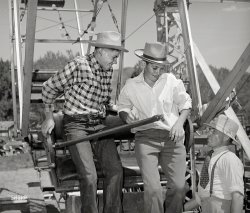
- Our Treasures: 1941
- July 4, 1941. Vale, Oregon. "One of the floats in the Fourth of July parade." Medium format acetate ... Farm Security Administration. View full size.
Vale Oregon The parade had arrived at North Main and "A" Street, looking north. ... Posted by Dave - 07/09/2020 - 1:58pm -
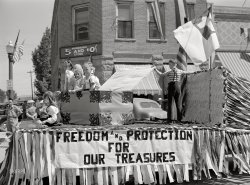
- Big Gun: 1917
- ...
There is a similar fort (Ft. Stevens) near Astoria, Oregon, that had the same type of guns. Fort Stevens was shelled by a Japanese ... Posted by Dave - 02/26/2024 - 11:02pm -
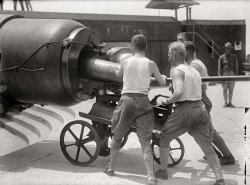
- Ashwood: 1939
- ... speak in moronic dialect, I mean. - Dave]
Portland, Oregon: 1992 When I was in college, a friend mentioned that her church had ... Posted by Dave - 09/08/2011 - 9:52pm -
![Ashwood: 1939 May 1939. "Second and third grade children being made up for their Negro song and dance at May Day-Health Day festivities." Ashwood Plantations, South Carolina. View full size. Photograph by Marion Post Wolcott for the FSA.
My father, my uncle, our neighborsand for that matter the whole mining camp looked like they were dressed in black face when they came out of the mines after a hard day shoveling coal...where they worked side by side with african-americans...and nobody ever gave it a second thought about racial differences. Everybody was just trying to survive (1940s Alabama).
Ashwood: 1940May 1940: Third and fourth grade children rehearsing for radio comedy, "Amos 'N' Andy: The Early Years."
No way the above picture could happen today without some major controversy.
No way could it happen todayNo way could it happen today at all.
That's because most peopleThat's because most people nowadays know this is ridiculously wrong.
Amazing how far we've comeThis must have been a "fun" time at the school...They were probably in their mid-twenties by the mid-fifties when the many of the race riots, sit-downs, boycotts etc. began in Alabama.
[Not to mention sit-ins. - Dave]
If you think this isn't offensive......then I want you to consider what would have happened had a group of black children dressed up in whiteface in 1939, then sang some traditional "white" songs in mock-patrician accents while lighting cigars with $20 bills. If it resulted in only their school being burned down, they would have been lucky.
Perfectly acceptable?someone clearly thought this was perfectly acceptable at the time, but the little girl with the mirror? what might SHE be thinking? the blonde, blonde hair and peter pan collar! and that kid in the double breasted suit! i'm not even sure what they're not sure about
Why is it wrong?Is it wrong to dress as an Eskimo to do an Eskimo song and dance? Or dress as Spanish Conquistadors for a play on that subject? Or as white cowboys or Native Americans? Or wear wooden shoes and pigtails for a nice Holland number?
[There's a big difference, these days, between blackface and dressing up as a conquistador. I'll bet most people know what it is. - Dave]
I never really understoodI never really understood why dressing in blackface is supposed to be so hurtful either. Where is the insult?
[Really. Where is the insult? Aside from being mocked by your former owners as shuffling, dimwitted buffoons who speak in moronic dialect, I mean. - Dave]
Portland, Oregon: 1992When I was in college, a friend mentioned that her church had organized mock Passover ceders [seders?] in which each member of the congregation was assigned a role, with lines to memorize, etc. She was surprised to discover that somebody she knew sincerely celebrated the holiday, and was worried that she had committed a faux pas along the lines of dressing in blackface.
In practice, I just found it funny.
Dressing as a member of another culture, even in a stereotyped manner, is not inherently offensive, though it can become offensive if it derives from a history of degrading depictions. Those who have never seen footage of old blackface performances may not be aware of what they entailed. I suggest renting the Al Jolson film "Wonder Bar," which ends with a jaw-dropping blackface routine set in Negro heaven. The movie also includes memorable pre-Hays-Code material about homosexuality and suicide.
Junior HighI remember acting in the 7th grade play in Jr. High School in Ohio in 1966 as the only black character in the play. I portrayed the character in blackface and stole the show. Of course in 1966, 2 years after the Civil Rights Act, the correct term was Negro.
MinstrelsyIn 1948 my high school had a minstrel show. Today I marvel at the Chicago Public Schools' insensitivity in allowing this. To top it off, our school didn't have an auditorium, so we had the show in a heavily black school. We were a bit uneasy.
Amos & Andy"I never understood why, in a a radio broadcast,, the performers had to be in blackface make-up."
If you're talking about Amos & Andy they didn't. Freeman Gosden and Charles Correll, didn't wear blackface for their broadcasts although they did "black up" (as was the common term for applying blackface) for publicity photos - wear they were frequently seen at the microphone - and for their rather infamous feature movie "Check and Double Check" which was the highest grossing RKO picture until "King Kong." When "Amos & Andy" moved to TV, the entire cast was made up of African-Americans.
Alternate activity suggestionsFor the people who imagine that dressing up in blackface is just imitating an ethnic group, consider that the whole blackface minstrel thing was invented by white people as a representation that they wished were true, because it made black people easy to dismiss.
If these people were genuinely interested in imitating black people where's their "Fredrick Douglas oratory contest" or their "Duke Ellington piano recital"?
Well, I guess that wouldn't be as educational as smearing black paint on your their faces would it?
Ashwood 1939I never understood why, in a a radio broadcast,, the performers had to be in blackface make-up.
Ashwood KidsMuch to these kids' credit, none of them appears to be having a very good time. The way many of the girls are holding their arms out would indicate that they are desperately trying to avoid getting any of whatever that stuff is all over their dresses. This sort of thing was by no means relegated to the south. Click here to view a still of Mickey Rooney and Judy Garland in a scene from the 1941 film "Babes On Broadway."
Some temporal perspective, please. Many of the commentaries concerning the photograph are no more than guilt swathed in politically correct speech. What is the point of such nonsense? The photograph stands for itself. A fraction-of-a-second glimpse of America, in that time and that place. No other. Any attempt to impute guilt, shame or right-or-wrong is doomed to failure. It amounts to nothing more than whining and sniveling by first-world people with electricity, computers and full bellies. Knock it off.
I propose we work to identify the, "sense," of this and other photographs that this glorious Shorpy venue offers. The subjects. THEIR thoughts and actions. What was the photographer trying to show show and say? And look toward the technical details of structure, identity, light, health, dress, and many thousands of details that are lost when the, "I'm Politically Correct," lot start in on a subject. They belong on Craigslist Rants and Raves with those other such people who have reduced their lives to bumper-sticker philosophies.
I am very grateful that this photograph exists. Without it, we would all be a poorer people. These are our ancestors, and like us, they are found in a place and time like no other. This photograph was taken 69 years ago. I am fairly certain that 69 years in the future, many of OUR activities will be viewed as those of barbarians.
Thank you,
John D. Rockhill
Tempe, Arizona
Late to the game..I know I'm late to the game with my comment, but...little children are not prejudiced, but this is a prefect example of young learning from their elders! Very sad! Shame on John for not believing this can be hurtful! I also love the pictures and take the offensive with the beautiful, but I believe it was wrong.
History, RevisitedThe greatest thing about photography is that the perspective of viewers keeps changing as the years pass.
(The Gallery, Education, Schools, Kids, M.P. Wolcott)](https://www.shorpy.com/files/images/8c10160u.thumbnail.jpg)
- Vacation Wagon: 1964
- ... the desert to Las Vegas and back up through California and Oregon. There really is nothing like seeing the U.S.A. in your Chevrolet. ... Posted by Dave - 05/31/2022 - 1:09am -
![Vacation Wagon: 1964 Our annual salute to the start of vacation road-trip season, first posted here 15 years ago. Everyone buckled in? Let's go!
"Great Falls, Montana. Return after 3 weeks Vacation. June 27, 1964." This Kodachrome of a 1960 Chevrolet Parkwood station wagon is from a box of slides found on eBay. View full size.
family trips in those carsI also spent some hot days in a car like that on the way to the grandparents. My mother flattened the second seat, put a mattress on the floor and loaded three of us and the stuff in on top of it, us and the stuff equally loose and not tied down. We whined and fought and slept our way to Cape Cod from southern NJ. My father always "had to work" (they were her parents), so she did the drive alone, I think maybe 12 or 16 hours? Seemed like forever.
NostalgicThese people still had a bright future ahead of them, full of great hopes for the days to come. They hadn't gone to the Moon yet, and to them, by 2007 we'd have personal helicopters and robots would run everything. The possibility of the President being indicted for a crime was unthinkable. My job as a web designer hadn't even been invented yet.
The lawn looks like it's literally astroturf. Were the colors really like that, or is it an effect of the kodachrome?
Holy cow! We had a 59 chevyHoly cow! We had a 59 chevy stationwagon back in the day. Does this bring back memories. We would drive to Florida from Virginia a two day trip usually in the heat of the summer to visit grandparents. Five children two parents no ac. Damn!
[This is a 1960 Chevrolet. - Dave]
DeflectorsDoes anybody know/remember what the deflectors left and right of the rear window were for? These may have been an aftermarket item.
It is amazing how well the colors in this slide are preserved after almost 50 years. It looks like Kodachrome all right, including the telltale blue cast in the shadows
The Astroturf look......to my eye, seems to come from the little flowers (or toadstools?) that are in the lawn. At the smaller image size, they look like specular reflections, making it seem like the grass is shiny.
[The white flowers are clover. - Dave]
1964As I remember it, this was less than a year after the assassination of JFK, there were race riots in the south and we (I was 14) were all starting to question attitudes towards women, blacks, hispanics, homosexuals and the culture we had grown up with. One of the more minor cultural things was the importance of your front lawn.
50 years?I was born in 1964, and trust me, it hasn't been 50 years since then, yet.... ;)
Re:DeflectorsThe deflectors on either side of the rear window were intended to blow air across the rear window to prevent snow from accumulating. A similar deflector is often fitted along the roof on station wagons from the 60s on. I think they were usually a factory or dealer option in later years, but I really don't know specifically about this model or when they might have first been used.
OK, 40 years.Sorry, I was too vexed on the year of manufacture of the car.
I remember that someone in our street had the sedan version of this Chevy. Like any 8 year old, I was fascinated by the winged tail and the panorama windshield. You didn't see many of these in Europe around 1960; everbody, including my father, was driving Volkswagen Beetles. (He later had a new Ford Mustang 1964 1/2 , with a 289 ci V8 and a four speed box, rally pack and (optional) front discs, which I found very impressive at the time. A real gas guzzler by European standards.
Family TrucksterThis is probably what Clark Griswold's dad took the family on vacation in. It's a 1960 Chevy, and I'm guessing it's a Kingswood model. The Brookwood was the more stripped down model and I think the "full dresser" was called a Nomad. This one isn't completely chromed-out and it has the small, dog-dish hubcaps so I'm thinking it's the middle of the line model.
I think the rear air deflectors also helped keep exhaust gas from entering the rear passenger compartment when the vehicle was moving with the tailgate window was lowered. Though it doesn't look like there's room for anybody in the third row of seats for this trip. With the window up they also helped keep the rear glass clear of snow and dust.
These are Parents of the Year......in my book. Can you imagine going across country now without all of the luxuries and Wendy's and portable DVD players and Nintendo and cell phones and credit cards?
These parents did it all the HARD way...and I'll bet they made a lot of memories that summer!
My jaw droppedOnce again the red stationwagon family blows me away. The color composition here is perfect.
Chevy ParkwoodThis is a 1960 Chevrolet Parkwood. Parkwoods and Kingswoods both use Bel Air trim (mid-level). The Kingswood, a nine-passenger wagon, has the third-row rear-facing seat, and two steps on the rear bumper (one on each end just outside of where the tailgate would come down). Less obvious is that all Kingswoods have power tailgate windows, an option on the other Chevrolet wagons.
I still drive a '59 ChevyI recommend owning one. In 2000 We took the ultimate road trip with mine from near the Canadian border in Washington State through the desert to Las Vegas and back up through California and Oregon. There really is nothing like seeing the U.S.A. in your Chevrolet. Cruising the Strip in Vegas was a blast. We might as well have been driving a space ship with the reactions we got. Sadly, these Chevrolets were mostly scrapped and very few survive.
60 ChevySadly, the third row seat had not been invented as of yet and the deflectors were used to deflect air into the rear of the stationwagon at slower speeds. I may not be an expert but I'm old enough to have ridden and slept in the back section of a folded down stationwagon. We didn't know about SUV's yet.
Chevy WagonChevy's Parkwood and Kingswood wagons could both be had with a third-row seat. And back then, for the record - wagons WERE the "SUVs" of the day!
[According to the 1960 Chevrolet sales brochure, only the Kingswood was available with third-row seating. The International Travelall and Chevy Suburban Carryall were two of the SUVs of the day. - Dave]
The luggage rackis something you don't see anymore. It hung on the wall of the garage when not in use. Once my dad, who was in a big hurry, didn't secure the tarp on top properly...
We played car games, like Alphabet, Road Bingo, and License Plates, read books, colored,sang songs and squabbled. You took your chances with local restaurants. We hadn't got used to entertainment on demand, so we didn't miss it.
And to Dave Faris: It's the film. I once assured my daughter that colors when I was a kid were the same as today. "The Fifties," she said, in her narrator's voice, "were an oddly-hued decade."
Slide ConversionHow does one convert slides to digital photos? Any website links or advice?
[You'd use a film scanner. I used a Nikon 4000 ED for this one. - Dave]
Family TrucksterWe had a green Ford station wagon, not nearly as nice as this, and with our family of six, it was a masochistic experience to take family vacations. Every summer we said that's it, we will never do this again, until the following summer when we did it again. The best part was arriving home again, but I will say that NOT having DVD's and high tech electronic gadgets forced the kids to look out the window and they gained incredible geographic knowledge from seeing the U.S. I could truthfully call these annual trips "purgatory on wheels."
Road TripMost all of my long-distance car trips were connected with moving as my father was in the USAF. In August 1954, after being in the UK 2½ years, we got in our in our '53 Chevy coupe and went from New York City to the SF Bay Area, mostly along US 40. Entertainment consisted of looking at the scenery and checking off the towns on the free roadmaps that the service stations provided in each state. Iy being the pre-Interstate era, one did go thru many towns back then! (Excepting on the PA Turnpike) Burma-Shave signs relieved the boredom in the rural areas. We had a car radio (AM only, of course), but for some reason I can only recall it being used while crossing the salt flats west of Salt Lake City.
Westward HoIn 1951 our family, my wife, son and daughter, living in Detroit, started taking trips to Cheney, Washington, to visit my WW2 buddy. All on old state highways, no air conditioner, 4½ hours to get through Chicago and the kids loved it. Took these trips out west to the 1970s. We still go west to see my buddy and my daughter in Seattle and we enjoy crossing Nebraska on old U.S. 30. It is a treat to be off of I-80.
Nostalgia Ain't What it Used to BeDon't look at this picture and pine for the old days.
Change the car to a green Olds Vista Cruiser and that's us in 1969. Back then, dads bought a new station wagon to kick off the summer vacation. Dads don't buy an SUV today for that reason.
Without repeating some of the horrors already mentioned below, there was the additional joy of Mom sending back a Coca Cola bottle for one of her sons to use in lieu of a loo. If the girls had to go, we had to pull over. Not so with the boys.
Watching mom backhand-fling a Coke bottle out her window, filled with fluid far different that what was originally intended, and seeing it bounce and spill along the shoulder as we whizzed along at 75 mph (pun intended), that's about the fondest vacation memory at least from the car perspective.
Today with the daughter hooked up to a video iPod and the sons enjoying their PSP, it's a pleasure to drive for distances. Back then, we didn't play License Plates. We played Punch Buggy and Slug Bug, etc. Fistfight games.
Let's go!I loved car trips, and I never had DVD players and Nintendo. I watched the scenery and kept a travel diary. those were some of the greatest times of my life.
Road TrripWe had to make do with pillows & blankets. A mattress would have made it actually comfortable. I don't know if Dad didn't have the imagination for that, or just not the money. I suspect the latter.
We'd sing sometimes. It was 12 hours from north Georgia near the North Carolina line to south Georgia, near the Florida line, where my grandmother lived.
I see the moon; the moon sees me.
The moon sees the one that I want to see ...
Thanks for the memoriesMy folks had the four-door sedan version of this car, in sky blue & white. My mom used to have a station wagon, don't remember what kind, but it was memorable for its pushbutton transmission on the dash instead of a gearshift! However my favorite "finned" car was our family's Buick Invicta. Now that was a car!
Third Row SeatsFords had third-row seats in 1955. I'm pretty sure Chevy had them by 1958 at least. Chevy didn't offer woodgrain sides until '65.
Sunday ridesWe had that same car, only in light blue.
No seat belts or infant seats for us! We'd put my baby sister in one of those deathtrap baby seats that hooked over the front seat and off we went!
What a picture!This picture takes me back almost 40 years to the road trips our family did during summer holidays when I was a little boy. It feels like I myself am stretching my legs after coming home. The colours, the moment -- one of my favorite pictures in Shorpy.
My Favorite Car was a 1960 Chevrolet Impala 2-dr hardtop. Bluish gray with white segment on the side, red and white interior. The first car my wife and I bought. Paid $1750 for it used in 1962. We made some wonderful trips in that car.
Re: Family TrucksterJust saw this item on TV yesterday about a real family named Griswold that had their station wagon modded to look like the Family Truckster from National Lampoon's Vacation movie for their trip to Disney World.
http://tinyurl.com/plo5kub
See the USA in Your ChevroletFor our family, it was a 1962 Buick Invicta wagon. Huge car designed for doing massive mileage on the interstates and that's what we did -- six or seven hundred miles a day from Indiana to the Rockies for our annual vacation.
Procedure for Accessing the Cargo AreaWe had one of these when I was a kid as well. Ours was a silver gray color. See the chrome disk on the trunk door? Upon arriving at destination, here's what you had to do:
1) Put trunk key in center slot (separate keys for ignition and trunk back then)
2) Open flap (as seen in photo)
3) Rotate flap several times till rear window is fully down
4) Reach in and grab handle to drop tailgate
Simple, huh?
Looking at old red carsmakes my elbows hurt! Seemed like some of those old single stage paints, reds in particular, had to be waxed every two weeks to keep them looking decent. The widespread adoption of clearcoat finishes in the late 80's to mid 90's freed modern kids from the dreaded frequent waxing chore, thereby giving them the leisure time to start the video gaming revolution...
As Long AsThis isn't really the "End of the Road"! That's a scary title for all the Shorpy Faithful.
3 Adults + 7 Children =1000 mile round trip to see grandma.
We kids didn't mind a bit.
Seat belts?I don't think you heard "Everybody all buckled up?" all that much in '64. I'm not sure of the exact dates, but if you had seatbelts back then, you bought them at a discount store or an auto parts store like Western Auto or J. C. Whitney, and they were lap belts only. Three point seat belts didn't come along for several more years, if I recall correctly, and it wasn't until the government mandated new cars with ignition interlocks in the 1970's that "real men" started to actually use them.
Back then, we used to spend our vacations camping, so the car was packed to the gills, including the center of the back seat. My sister and I each got little cubbyholes next to the doors, with just room enough to sit for the trip to northern Wisconsin. My dad drove a two tone green '55 Oldsmobile Delta 88. I saw a picture of that car a few months ago, and as soon as I did, I started remembering a surprising amount of detail about the car's details. It was handed down to me when I went off to college in '64.
Seat beltsbobdog19006 is correct in that seat belts were not standard equipment in 1960. However, they had been available as a dealer-installed option since the 50s. By 1966, they were standard in all Chevys, and by 1968, they were federally mandated.
I spent many a happy hour on family roadtrips in our '68 Ford wagon, nestled in the narrow gap between the second row and the rear-facing third-row seat, no seat belt, of course. Neither did my siblings in the third row.
Service StickersI remember those stickers that service stations or car dealers put on the inside edge of the driver's door when you got your car serviced. This Chevrolet has two.
Our road trip rigWe had a '76 Chevy Beauville van, a ho-hum light brown rather than red, which made up for the lack of chrome spears with its cavernous interior: two bucket seats in front for Mom and Dad, two bench seats, and a homemade plywood bed. Strangely, all that space wasn't enough to prevent sibling quarrels.
The best story of this van was the return trip of its maiden voyage, when my uncle, who owned a small niche-market manufacturing firm, talked my dad into towing a piece of equipment from South Texas to a parking lot near Chicago, where we would deliver it to his customer from Wisconsin. We quickly got used to being asked at every single hotel, gas station, and rest stop, exactly what was the three-wheeled contraption with the hydraulically-actuated vertical roller-chain conveyor with teeth.
The looks on everyone's faces when my dad told them it was a grave-digging machine: Priceless!
Curtains?Every August for years we travelled from Birmingham to Cincinnati for a week of visiting my parents' relatives. Before our last such trip in '69, we went through a black-and-white '57 Plymouth Savoy, a metallic-beige '63 Ford Country Sedan wagon (the one without wood on the sides) and a '67 Olds VistaCruiser. I'd love to have that VistaCruiser back today. Ours was burgundy red and my dad put red stripe Tiger Paw tires on it. Imagine a 442 station wagon.
As for Shorpy's '60 Chevy wagon, I only just noticed the homemade or aftermarket side curtains, with vertical stripes of brown, gold and red to compliment the bright red car.
Thanks, Dave, for showing us this photo again... and including all the original comments, too. Great to relive all the great summer vacation stories with everyone!
Re: deflectorsIn the days before the rear window wiper on a station wagon, some folks put these on and the deflected air current would help to clean off that window to a degree. Not having either, within a mile that rear hatch would be almost impossible to see through. Been there, done that and got the tee-shirt.
This does bring back memoriesWe had a similar station wagon, but it was salmon (or was it mauve, or ecru?) colored with a white top (I think). It had a 460 a/c (four windows down while traveling sixty miles per hour, some times 560 with the rear tailgate window down). I remember taking a trip from Mississippi to Six Flags over Texas on U.S. Highway 82 (two lane most of the way) in Summer, 1964. The back seats were folded down, and the four of us kids had pillows, blankets, books, and board games to pass the time. It was replaced soon after with a 1965 Ford Country Squire Wagon with a/c, and fake wood paneling on the side. Instead of a rear facing bench seat, it had two small seats on either side that faced each each other.
Memories of summer tripsWe also lived in Montana back then, and our family truckster in the 1960s was a 1963 Rambler Classic station wagon. (Yes, I suffered greatly for it among my friends.) That's what I learned to drive, and we ranged all over the western US and Canada in it.
Before that, however, we traveled in a 1949 Studebaker Land Cruiser 4-door sedan, which my dad (both inventive and frugal) had outfitted with a set of three back seats that, when covered with the mattress from our roll-away bed, filled the back seat and trunk area with a very passable sleeping unit. That's where I spent most of my time on our travels. At other times, I would climb over the front seatback into the front bench seat between my parents. That's where I was on August 5, 1962, when we were preparing to leave Crescent City, CA, and heard on the radio that Marilyn Monroe had died.
Deflector's actual purposeWas to break the "vacuum" the "wall" that was the rear of that wagon created which would suck exhaust into the car if that rear window was open even a little bit. The fresh air, the snowless/cleaner rear window were merely bonuses...
Buckle up?A 1960 Chevy wagon probably didn't have seat belts unless the owner installed them. The kids in the back were pretty much free range as long as they didn't make too much noise. Lots of people piled the stuff on the roof and put a mattress in the back for the kids.
It was a great way to go and most of us survived.
[Seat belts were optional on all 1960 Chevrolets. - Dave]
Car playgroundMy folks had a Ford wagon of that era. No seatbelts. Folks put a mattress in the back. Became our playground on long trips. We had no desire to "sit" in a seat.
Miss station wagonsI miss station wagons. I prefer them to the SUVs that replaced them.
I also miss the bold bright colors that cars use to come in.
No SquattingLooking at all the stuff already loaded, I'm surprised the back of this wagon isn't dragging on the ground. In fact it's sitting pretty level. I wonder if dad had overload springs installed?
We've had one built for you.To BillyB: Station wagon suspensions were designed with the idea that they would have to haul some combination of eight people and their luggage, so they did OK when loaded down. They *were* softer than contemporary pickup trucks, so the back end of the station wagon wouldn't bounce all over if there were only one or two people in it. Especially at the time of this photo, gas was 25 cents a gallon and would be that price forever, so the factory didn't mind spending a little extra weight on a beefier suspension.
Also, most of the really heavy luggage went on the roof rack, which was fairly close to being in the middle of the wheelbase. The back-back, behind the rear seat, tended to contain lighter things, like blankets, pillows, the picnic basket, and - as the trip progressed - bags of souvenirs. If Dad wanted to use the inside rear-view mirror, you couldn't stack stuff much higher than the seats, anyway.
Source: I rode in the back of a '79 Oldsmobile wagon every summer from '79 to '87. I think the longest trip we took in it was from Kansas City to Washington, DC and back.
WagonsWe had a 1956 Ford wagon, then '61 Mercury wagon, finally a (I think) 1964 Ford wagon.
I remember one year with the Mercury, my mom ran low on gas. We were up in the mountains in a resort town. To get to the gas station, she had to reverse up hills, turn around for the downhills, turn around again for going up the next hill. What a ride.
Another time, 1965, we were in a typhoon in the current wagon. There were eleven of us in it. Another wild ride driving on a road along the bay. Waves washing over us, my mom hugging the middle of the road (there was an island we could not get across).
Wagons were great.
The 283 V-8with its 170 gross horsepower is not going to have much highway passing reserve with all that weight. Cross-flags over the V on the tailgate would have indicated one of several 348's which would have given more than enough reserve. That car is 58 years old but properly equipped could have kept pace with most cars on the road today in equal comfort. A 58 year old car in 1960 by comparison was barely even recognizable as such it was so rudimentary by comparison to the 1960 version in its looks and capabilities. The same comparisons held true in all other realms of life comparing 1960 to 1902--homes, conveniences, dress, you name it. Virtually any of those later areas are not that significantly different from their 1960 versions.
Those deflectors... were supposed to keep dust off the back window
Nikon CoolscanI am having a problem with mine. Can you recommend a place that can repair them.
[There aren't any. Try buying them used on eBay. - Dave]
283 V8Although I agree that a 348 engine would have been a better choice for this station wagon. The 170hp 283 was the base V8 engine with just a single two barrel carburetor. The next option up was also a 283 but with a four barrel which the above wagon may have had, which would have given it a little more passing power.
Koolscan softwareDave. What software program do you use with your 4000? As it seems the program that came with it is only works for Microsoft VISTA.
[I use the NikonScan software that came with the scanner, on a Windows 10 workstation. To install the software on a modern operating system, you have to disable Driver Signature Enforcement. And it's Coolscan, with a C. - Dave]
(The Gallery, Cars, Trucks, Buses, Kodachromes 1, Travel & Vacation)](https://www.shorpy.com/files/images/vacation_1960s_00.thumbnail.jpg)
- Let George Do It: 1942
- ...
2 Dec 1999 (aged 80)
McMinnville, Yamhill County, Oregon, USA
News-Register, McMinnville, Oregon, December 4, 1999
A memorial service for George Hans Camplair of ... Posted by Dave - 10/28/2023 - 2:48pm -
![Let George Do It: 1942 September 1942. Fort Belvoir, Virginia. "Army Sgt. George Camplair on kitchen police duty." Last seen here, 10 years ago. Photo by Jack Delano, Office of War Information. View full size.
Door Color ConventionsWould they have painted the area around the handle which also extends to the trim for avoiding dirty handprints, or is there another reason for doing that? Low light contrast for the 0300 KP arrivals, maybe?
For crying out loudA sergeant peeling onions? Must have been as rare then as it has been during my time in another army.
Well, at least now I know what "kitchen police duty" means.
The Life of GeorgeFrom www.findagrave.com
https://www.findagrave.com/memorial/71018696/george-hans-camplair
George Hans Camplair
BIRTH
27 Jun 1919
Berlin, Germany
DEATH
2 Dec 1999 (aged 80)
McMinnville, Yamhill County, Oregon, USA
News-Register, McMinnville, Oregon, December 4, 1999
A memorial service for George Hans Camplair of McMinnville will be held at 11 a.m. Monday in Trinity Lutheran Church, McMinnville.
Mr. Camplair died Dec. 2, 1999, in Willamette Valley Medical Center, McMinnville. He was 80.
He was born June 27, 1919, in Berlin, Germany.
He and Mary Jane McNutt were married in 1946.
He worked with the Army Corps of Engineers during World War II in Africa and Hawaii. He continued as a cartographer with the Corps in Washington, D.C., from 1945 to 1979, when he retired.
He moved from Virginia to Portland in 1993 and had lived in McMinnville since 1994.
Mr. Camplair was named Volunteer of the Year in 1998 by the Oregon Alliance of Senior and Health Services. He had worked as a volunteer for Meals on Wheels, Loaves and Fishes and the McMinnville chapter of Habitat for Humanity.
He was a master gardener and worked many hours on landscaping projects as a member of the garden committee at Hillside Manor, McMinnville. He was a hike leader for McMinnville Senior Center. He belonged to Trinity Lutheran Church.
Survivors include two sons, Christopher Camplair of Portland and George M. Camplair of Nashville, Tenn.; a daughter, Nancy Phelps of Portland; and eight grandchildren.
He was preceded in death by his wife in 1981; and a brother, Peter Camplair, in 1971.
Memorial contributions may be made to Habitat for Humanity, McMinnville Chapter, 342 N.E. Third St., McMinnville, OR 97128.
Arrangements are under the direction of Heritage Memorial, Portland.
Who wore the apron in this family ?Sgt. Camplair (1919-1999) eventually made it out of the kitchen and got married in 1946:
On a side note, it can be pointed out that as the family had actually emigrated from Germany - George was born in Berlin - fate might well have found him in another kitchen, peeling Zwiebeln for the Wehrmacht.
SurpriseI do wonder that an NCO gets this kind of KP duty. Are there no privates?
Peeling potatoesWhy bother doing it at all? I grew up in a household that peeled potatoes and carrots, but now I peel neither. I just wash them first, then move on to the rest of the prep without peeling. Even for mashed potatoes. There are nutrients and roughage in those skins – why waste time and food removing and tossing them?
[Those are onions in the photo! - Dave]
More on doorsI suspect Eventerguy is correct; I've seen similar black-painted areas on doors in other military structures, like these doors at Camp Reynolds on Angel Island. Makes me wonder if this was a standard military practice for high-traffic doors, or if each army post came up with the idea on their own.
KP duty? I was this many years old when I learned KP duty was "kitchen police" and not "kitchen patrol" duty!
Let George do it?Doesn't look like Bob Bailey to me. Probably very few would get that reference.
TimelineThanks to Rochester for researching George Camplair's history.
It really adds weight to an image to know a little more about the people in it.
Interesting he was born in Berlin but was ultimately in the US Army. Not that was necessarily unusual, but worthy to note.
Thanks also to Notcom for the 1946 news story on George's wedding to Mary McNutt. Probably the girl shown in the 'Sarge At Large' photo 10/20/23 (1942)
(The Gallery, Jack Delano, Kitchens etc., WW2)](https://www.shorpy.com/files/images/SHORPY-8d08167a.thumbnail.jpg)
- Nashua: 1908
- ... city), "also tied with Cleveland and Cincinnati, Salem, Oregon, Washington, D.C. and Seattle for the most hate crimes per capita." Uh ... Posted by Dave - 10/20/2023 - 3:43pm -
![Nashua: 1908 1908. "Main Street -- Nashua, New Hampshire." At right, offices of the Nashua Telegraph and Fletcher's Optical Parlors. 8x10 inch glass negative, Detroit Publishing Company. View full size.
1908 and 2017
PigeonsJust try to tell me pigeons aren't trash birds!
Safe spaceMaybe you heard this already but WalletHub just named Nashua, New Hampshire, the safest city in America. The other nine in the top ten are Columbia, Maryland; South Burlington, Vermont; Gilbert, Arizona; Warwick, Rhode Island; Portland, Maine; Casper, Wyoming; Yonkers, New York; Burlington, Vermont; and Scottsdale, Arizona.
According to the same study, South Burlington, Vermont (the third safest city), "also tied with Cleveland and Cincinnati, Salem, Oregon, Washington, D.C. and Seattle for the most hate crimes per capita." Uh oh. Maybe move to Burlington, Vermont -- less than three miles away and coming in at ninth on the safest city list.
Or just stay put and take your chances.
CLOUDS!I don't know if it was luck or some type of different exposure process, but it's rare to see a sky with clouds in these old photos. The cameras couldn't pick up the subtle shades and usually the skies appear completely white even though at the time they may have been overcast or partly cloudy.
Because now you can bank onlineWorking left-to-right:
JennyPennifer's comment caused me to pay special attention to the police officer walking his beat, just to the left of the wagon parked at the curb. He's dressed like a London Bobby.
The four-story building with the curved front is, regrettably, gone. This likely happened when Main Street was straightened, and a newer bridge was built across the Nashua River. The Romanesque church at the end of the street is on the other side of the river.
The building at right, which became a bank in jrpollo's update, is now luxury condos, called The Mint. Not to criticize too much, but my first efficiency apartment had more kitchen space. I guess the residents are expected to eat out. A number of nearby restaurants have expanded their al fresco option to include both the sidewalk and the parallel parking spaces in front of their restaurant.
Straight and trueI lived in Nashua for 12 wonderful years and lived in the North End right off of Concord. This image did raise a question about the curved building a block from the river crossing. Any straightening alluded to earlier would have taken place much earlier in the 19th century...
The Sanborn Insurance maps of 1912 indicate that Main Street and the bridge were already where they are today. But the curved building, identified as the Howard Block gracefully curved to widen the main street from the width of the bridge (I am guessing). Main Street really is three lanes wide in each direction... feels like an avenue in Manhattan. I am also grateful that the Library of Congress has these Sanborn maps...! Terrific detail about buildings and their particular use.
Here is the link to that image: https://www.loc.gov/resource/g3744nm.g3744nm_g053631912/?sp=32&r=0.517,0...
Different process = CLOUDS!Eary photographic processes were primarily sensitive to only blue light. Numerous newer processes throughout the late 19th century added increases sensitivity into the greens and yellows resulting in what we now call orthochromatic materials.
It wasn't until around 1906 that a truly panchromatic emulsion with full sensitivity to red was developed. This took several decades to become dominant. It wasn't until the panchromatic films and plates became available that we begin to see photos that can render skies anything other than nearly blank white.
Orthochromatic materials remained in use for quite a while largely because you could develop them under a red safelight. Panchromatic materials required total darkness.
[Here and here, some clouds from 1864! - Dave]
Light grey/white clouds against a blue sky require a panchromatic emulsion, otherwise the clouds and sky reproduce nearly the same light grey. Only when the clouds are all grey and dark grey (think: storm clouds) will they reproduce on earlier orthchromatic or pure blue sensitive emulsions.
Tea TimeThe Grand Union Tea Company delivery wagon in the Nashua photo made me curious. My local New Hampshire grocery store used to be a Grand Union. I found a brief history of the company here:
https://oldmainartifacts.wordpress.com/2013/10/07/grand-union-tea-compan...
(The Gallery, DPC, Small Towns, Stores & Markets)](https://www.shorpy.com/files/images/SHORPY-4a22639a.thumbnail.jpg)
- Comic-Con: 1942
- July 1942. "Nyssa, Oregon. Japanese-American boys at the newsstand on their weekly visit to town." ... a 10 cent investment.
Freedom from fear Re: Nyssa, Oregon detention facility for Japanese-Americans see https://encyclopedia.densho.org/Nyssa,_Oregon_%28detention_facility%29/
Napoleon and Uncle Elby comic books ... Posted by Dave - 09/01/2022 - 10:13am -
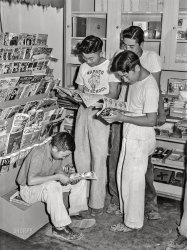
- The Mint: 1940
- ... don't miss him In a few days he will be in Oregon!
The Evening Herald from Klamath Falls, Oregon - Tuesday, November 12, 1940· Page 2:
Dance with Sam Crawford ... Posted by Dave - 08/31/2018 - 2:07pm -
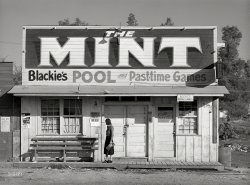
- Merry Christmas: 1913
- ...
From here in Portland From here in Portland Oregon, to every corner of Shorpyland and to each and every one of its ... Posted by Dave - 12/25/2020 - 7:11am -
![Merry Christmas: 1913 The colorized Christmas tree is back, 107 years after its debut in Madison Square. Happy holidays from Shorpy!
New York, December 1913. "Christmas tree, Madison Square." 8x10 inch dry plate glass negative, Bain News Service. View full size.
Beautiful!Wow, what a beautiful tree! Merry Christmas, Dave, and Merry Christmas to all in Shorpyland.
Best Image Site on the InternetBest wishes for 2010.
Merry Christmas!Great photo! Thanks so much Dave for this great site. I have so enjoyed it all year long and look forward to more! Merry Christmas and Happy New Year!
Dateline Shorpyland:Merry christmas Dave and to all who visit here.
Merry Christmas To YouAnd thanking you for another year of incredible photos. You have given us a view into the past that few have ever had the chance to experience. You've changed my life.
Prepared and thereHow very often it is when we see a photo of an important event that Boy Scouts are present.
Merry Christmas, Shorpyites.
Rick MacDave, a Merry Christmas to you! And thanks for your site -this has become my favorite. I look forward to checking for new photos every day, and I'm never disappointed. It's like having my own personal time machine. It's a blast!
Thank youFor all the wonderful pictures and happy holidays right back at you!
Beautiful!!That is beautiful! Thanks for all the great pics and Merry Christmas to everyone!!
Merry ChristmasMerry Christmas to all Shorpyites from Reading, England
A Shorpy Christmas To AllAnd a huge thank you to Dave and the staff at Shorpy, you have, literally, changed my life.
Merry Christmas from Puerto Rico!I join my fellow Shorpyites in thanking you for another year of wonderful photos. May you live long and prosper!
TintedIs this hand colored?
[Computer-colored. By me. - Dave]
Merry Christmas!Beautiful picture, Dave. May I add my thanks to you for providing us with these great pictures. I feel like I understand the world a little better after seeing these great glimpses into the past.
Thank YouThank for for this wonderful image. My grandfather was ten years old that Christmas, probably about the size of the shorter of the two boys in the foreground. He also lived about fifteen blocks from Madison Square, so I imagine he was able to see this very tree that Christmas. Thanks again and merry Christmas.
It's been a year of fantastic backward glancesMerry Christmas to all!
Pictures are, indeed, worth a thousand words and Shorpy is a regular stopover site for me.
Thanks for sharing all this, Dave.
Merry Christmas to alland a big thank you to Dave for the best site on the web and we can't forget tterrace and we hope he doesnt run out of photos.
Ron
Merry Christmas to one of my favorite web sitesThank you so much for sharing all these marvelous photos with us.
EchoWhat everyone below said. A big "thank you", Dave, from Las Vegas.
Merry Christmas!To Dave and staff and everyone else who visits here! Thanks so much for this wonderful site and all the memories!
This is about as close to a time machine as we're likely to see.You've changed my perception of how life was all those decades ago. You've helped me to see those years come alive.
Merry Christmas, and thanks for one of the most incredible sites on the web.
Merry ChristmasMerry Christmas and Thank You!
GratitudeI must add my sincere thank you as well Dave, and to those who aid you or add to the information, for the wonderful memories sparked by many photos here, and for the historic value of many of these pictures. Merry Christmas to all!!
From Your Favorite Nittany LionTo Dave and all my fellow Shorpyites, from the mountains of Pennsylvania, MERRY CHRISTMAS TO ALL!
DibsLet me be the first to wish one and all a glorious Christmas and a bodacious New Year!
Merry Christmas everyone!In the background on the right is the Hoffman House located at Broadway and 24th Street. I love how the lights have been colorized!
From Manitoba, CanadaEven our decorated trees aren't this big!
A very Merry Christmas to all!
Merry Christmas one & all from the UK!I'd like to wish everyone at Shorpy a fabulous Christmas and a healthy new year.
Merry ChristmasWishing all at Shorpy a very happy Christmas and seasons greetings to my fellow Shorpyites!
Holiday GreetingsTo all Shorpyites, Dave, tterrace and Stanton Square: Holiday Greetings from Bull City Boy, Bull Ciry Girl and all the Bull City Young'uns. Have a blessed Christmas
A Little LateIt's 8:13pm Christmas day out here in Spokane, but I want to wish everyone who visits this wonderful site a very Merry Christmas and all the best for next year. Thanks Dave, and all who make this possible. I learn something new every day from all of you. Thanks.
Happy HolidaysThank you, Dave - and thank you to all the folks who manage the site, and thanks to the contributors and commenters.
The world of Shorpy is a terrific gift you share with us, every day.
Merry ChristmasMerry Christmas to Dave and all the Shorpyites from an old coot in Virginia
Mele Kalikimaka!Christmas greetings from Hawaii!
1913Well, my father was born in 1914 and was a wonderful man and father even after getting shot to pieces in Italy with 168th Infantry, 34th Division during WWII. I'm OK with 1913 since my Aunt Helen was born in 1912 and was a most wonderful lady with smiles and laughs and hugs for me when I was a lad. The 1912 & 1914 bracket around 1913 is OK by me.
Christmas GratitudeThank you for this wonderful site Dave and a special thank you for the photos you posted this year from the glory days of my hometown, Utica, New York. You, Shorpy, and others (especially tterrace) have provided a boundless window into the past and countless hours spent away from the stresses of the day indulging in something that is neither fattening, nor bad for me. Shorpy IS however, highly addictive and wonderfully entertaining.
Best wishes to all in 2012!
Merry Christmas Shorpy!Another year gone by already!
Merry Christmas to AllAnd a Thank You to Dave and the Shorpy Elves for all the work you put into this site.
Best Wishes from Canada.Merry Christmas to Dave and all the Shorpsters !!
Nothing left to sayI echo ALL the sentiments of the commenters before me. So, just a simple Merry Christmas from Minneapolis, MN to Dave, Shorpy and the Shorpyites!!! Wishing you all an awesome 2012.
From Cape Breton Canada A Merry Christmas to Shorpy and all .....
Merry Christmas!Dave, I'm a relative noob, here, and truly enjoy what you do. Merry Christmas from the Left Coast.
Thank you and forward, into the past!
Merry Christmas Gang!Dave, the rest of the Shorpy administrators and the great member submitters, Merry Christmas and thank you very much for another year of marvelous photos and replies for my mind and mailed photos for my wall! I wish everyone a grand new year!
To each and every oneFrom England, to every corner of Shorpyland and to each and every one of its inhabitants -- a Merry Christmas, and a Happy, Peaceful and Healthy New Year.
Merry Christmas & Happy New Year!to Dave and all the denizens of Shorpyville.
Merry Christmas and Happy New Year to AllMerry Christmas from Boston, Dave, and many thanks. Shorpy is a fantastic community!
From here in PortlandFrom here in Portland Oregon, to every corner of Shorpyland and to each and every one of its inhabitants -- a Merry Christmas, and a Happy, Peaceful and Healthy New Year.
Thank you, Dave, for giving us a glimpse back into the past. This is one of my favorite sites.
Merry Christmas to allMerry Christmas to the Shorpy staff, contributors and commenters. Really appreciate all this site offers, it is one of my favorites.
Madison SquareTo all at Shorpy, Merry Christmas!
This is a great website and I have told many about it.
This photo reminds me of a print by the American artist Martin Lewis. The picture is titled "The Orator" and is dated 1916. The scene is Madison Square. The three large buildings in the background are still standing and are located around the intersection of 5th Avenue/Madison Square North/W.26th. The photo and the Christmas tree are beautiful!
Merry Christmas and a Happy New YearA bit late for me for the former, but heartfelt wishes to all for the latter
Thanks so much Dave, for all of the work you put into Shorpy. Before it came along, I had to be pacified with scanning old pic collections at flea markets. Alas, no more! A very Happy New Year to you and yours!
Happy New Year and for many years to come Thank you so much for the look back and to your members for giving me the chance to compare with current photos on occasion.
MERRY CHRISTMASThank you all at Shorpy for another great year on one of my favourite sites. Merry Christmas to you all!
Edmund
Christmas wishesMerry Christmas Dave to you and all at Shorpy, another fine year and looking forward to 2017.
Peace and Goodwill to AllMany thanks for the photos on this site. My father was born in northeastern Alabama around the time of Shorpy, and this alone makes the site worthwhile. To see and read about those times is very revealing. But the site is much more! Just the railroad photos alone are fantastic. Please know that you are appreciated, and Happy New Year to Shorpyland!
Merry Christmas Everyone!!Merry Christmas to all out there in Shorpyland - everyone reading, everyone posting and especially to Dave and the Shorpy crew. Keep those great pics coming! Now, off to the Office Party!
Merry Christmas: 2018I passed some very pleasant time in a Canadian Tire store near Toronto on Christmas Eve yesterday, an hour before closing, relaxed and unharried, with a brother-in-law and nephew, trying to figure out all the different kinds of tree lights available, to make a totally unnecessary purchase, upon command of a family member higher up than us on the boss scale. And the result was nowhere near as nice as this Madison Square tree.
Merry Christmas and best of the season to Dave and tterrace and all my Shopry comrades at this bright and festive time of year.
Merry ChristmasMerry Christmas from Canada !!
Glad Tidings to AllMerry Christmas, Happy Holidays, Season's Greetings, Blessed Yule, and all other wishes to everyone here. May your tables be filled with good food and good conversation. See you in 2020.
With gratitudeThanks to Dave and all who contribute. It's been a great trip of learning, from Mr. Higginbotham's life story to "flange bearing frogs". I thought the little amphibians were doing some heavy lifting!
Wishing all a better 2021.
After a full day and night Zooming Xmas Celebrations - - - After 3am realized I didn't get my daily dose of SHORPY and will complete reading and commenting around 4:50 am. Looking forward to the New Year edition to cap off another year of David's, tt's and other's massive and Artful contributions stimulating our family's memories and new insights as to our collective history as ALL our folks arrived as immigrants some as slaves or indentured workers and others stowaways or sailors and crew members jumping ship. The rest of our people we see populating SHORPY'S cities, towns and farms arrived on our shores in a wide range of financial status. However difficult it probably was for most of our descendants it's amazing how quickly, often in only one generation the new language and customs morphed into the American citizens we compare Shorpy's folks to. I as I begin my 89th year I'm the only first generation Norwegian / American male left in my NYC clan. Although l had a pleasant holiday I sorely miss our Scandinavian main roast pork meal on Xmas Eve with all the varied and distinctive cookies and other baked cakes that were baked during the week before and the house smelled like Xmas the whole tantalizing time. One of my dad's insistence that mom wasn't to speak to my sister and me in Norsk - slid into our having the American turkey and apple cyder on Xmas - wasn't that cool !
Merry Christmas!I want to wish all Shorpyites, both regular commenters and non-regular commenters alike, the happiest of holiday seasons this year. 2020 has been terrible, on almost every level a year can be terrible, and a little peace and joy over the next week shouldn't be too much to ask. I hope you all had a wonderful Christmas yesterday with however many people you're allowed to have at your house. I hope the food was good, the conversation was lively, and the feelings warm.
Come on 2021...
(The Gallery, Christmas, G.G. Bain, NYC)](https://www.shorpy.com/files/images/SHORPY_01807u-xmas-1.thumbnail.jpg)





